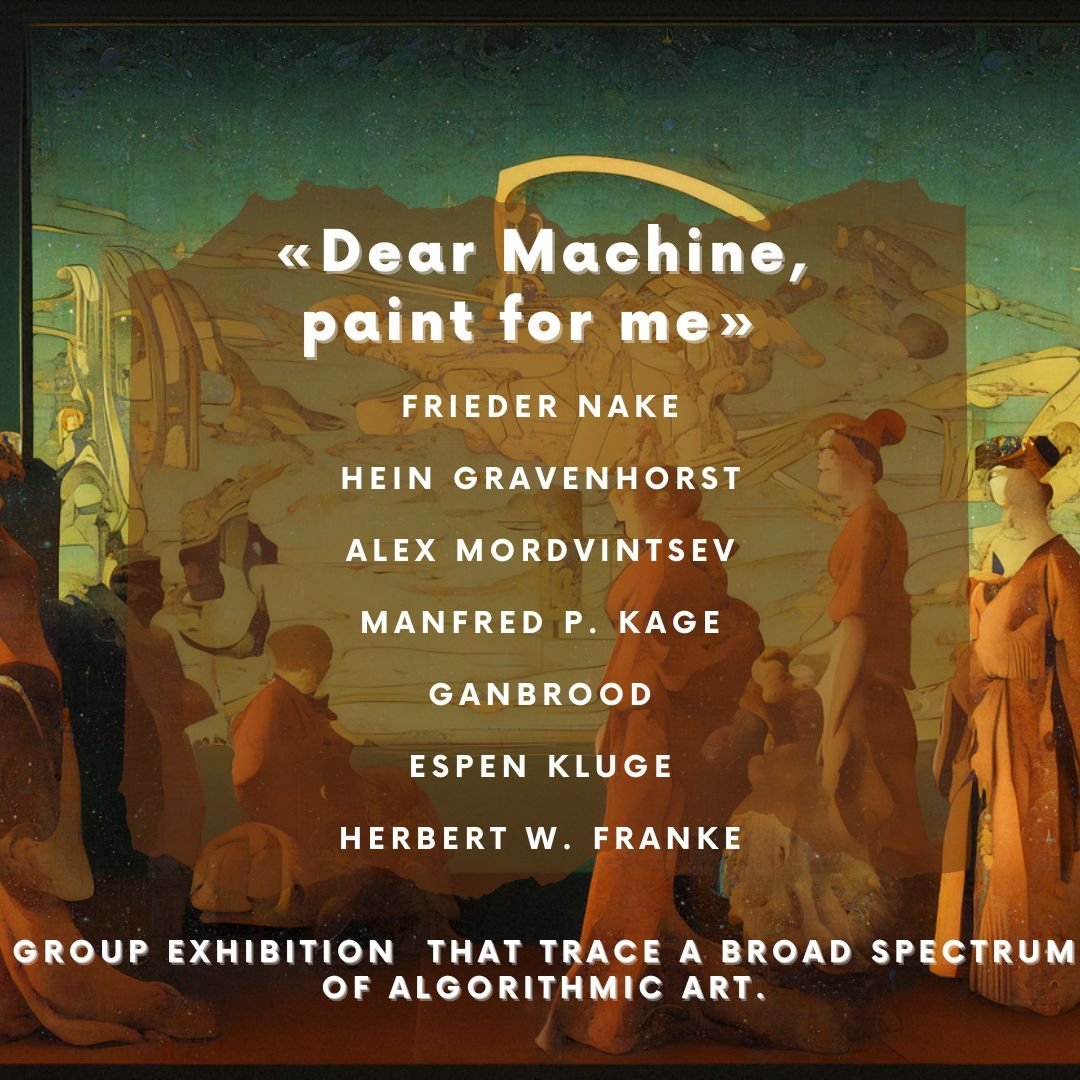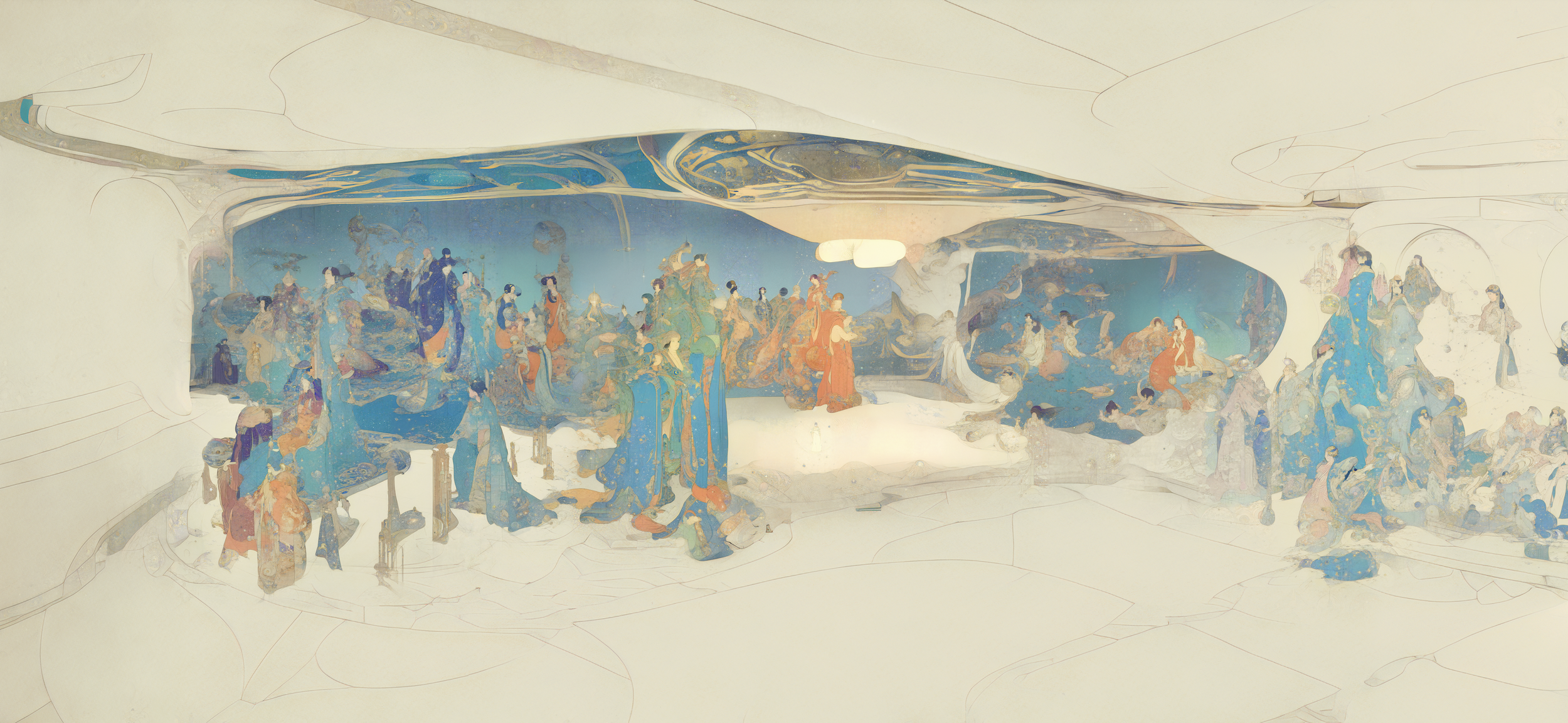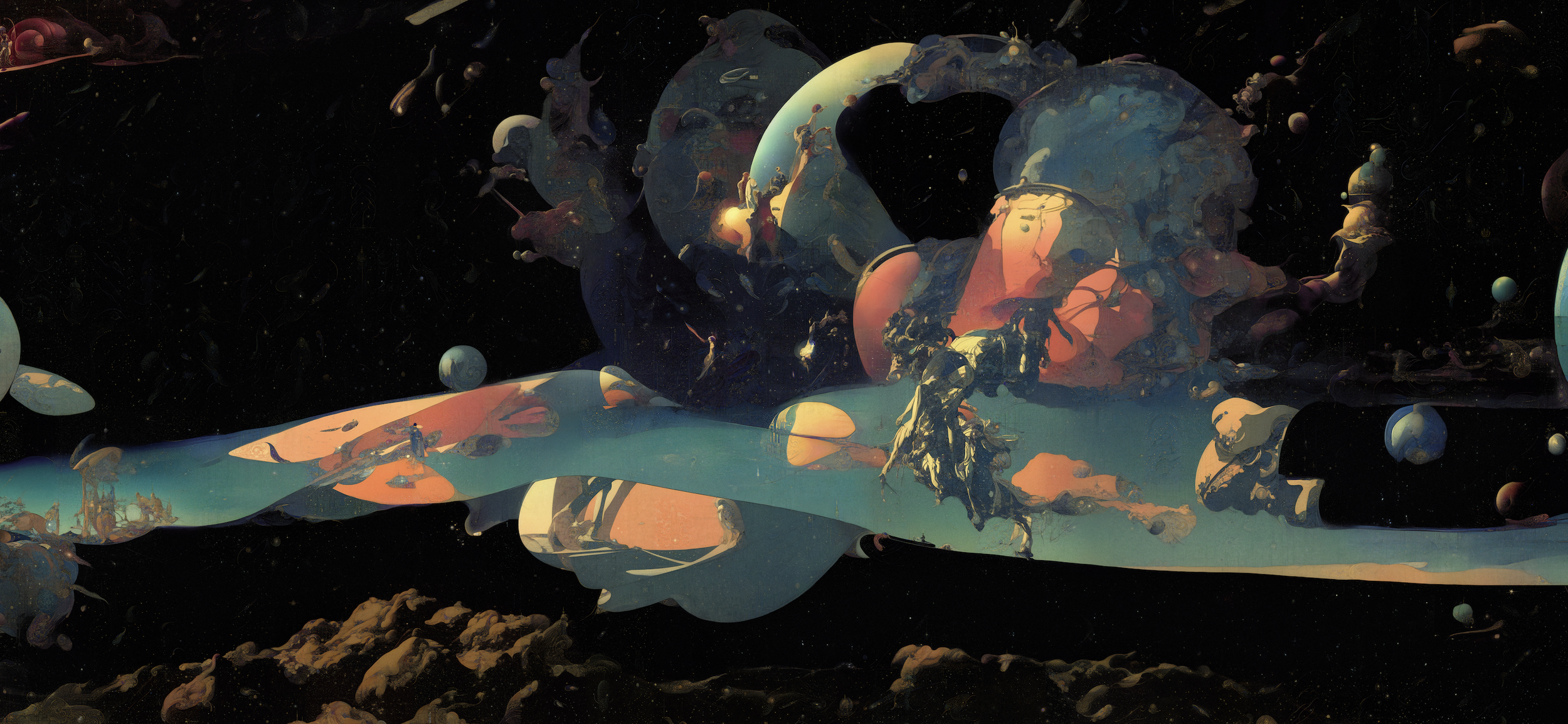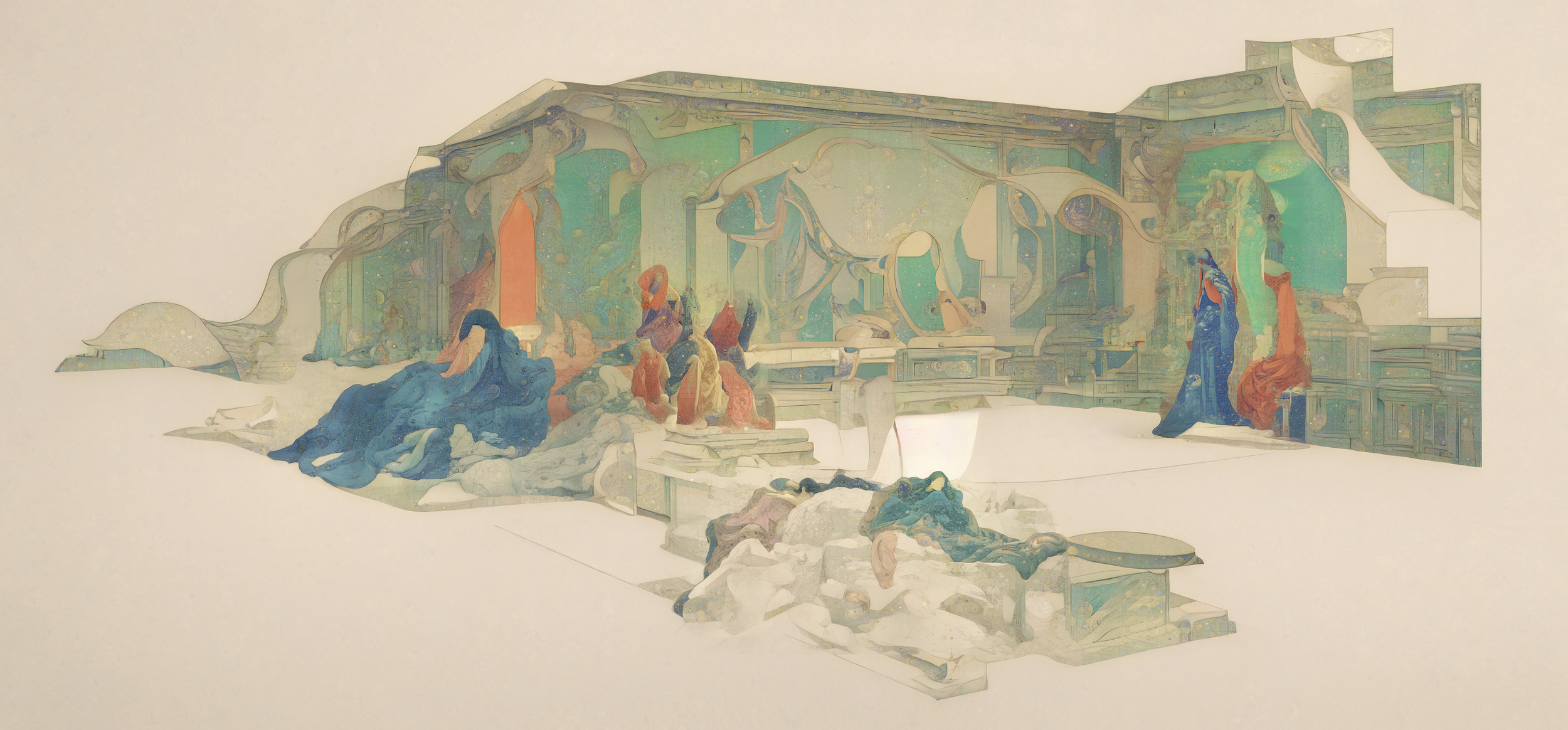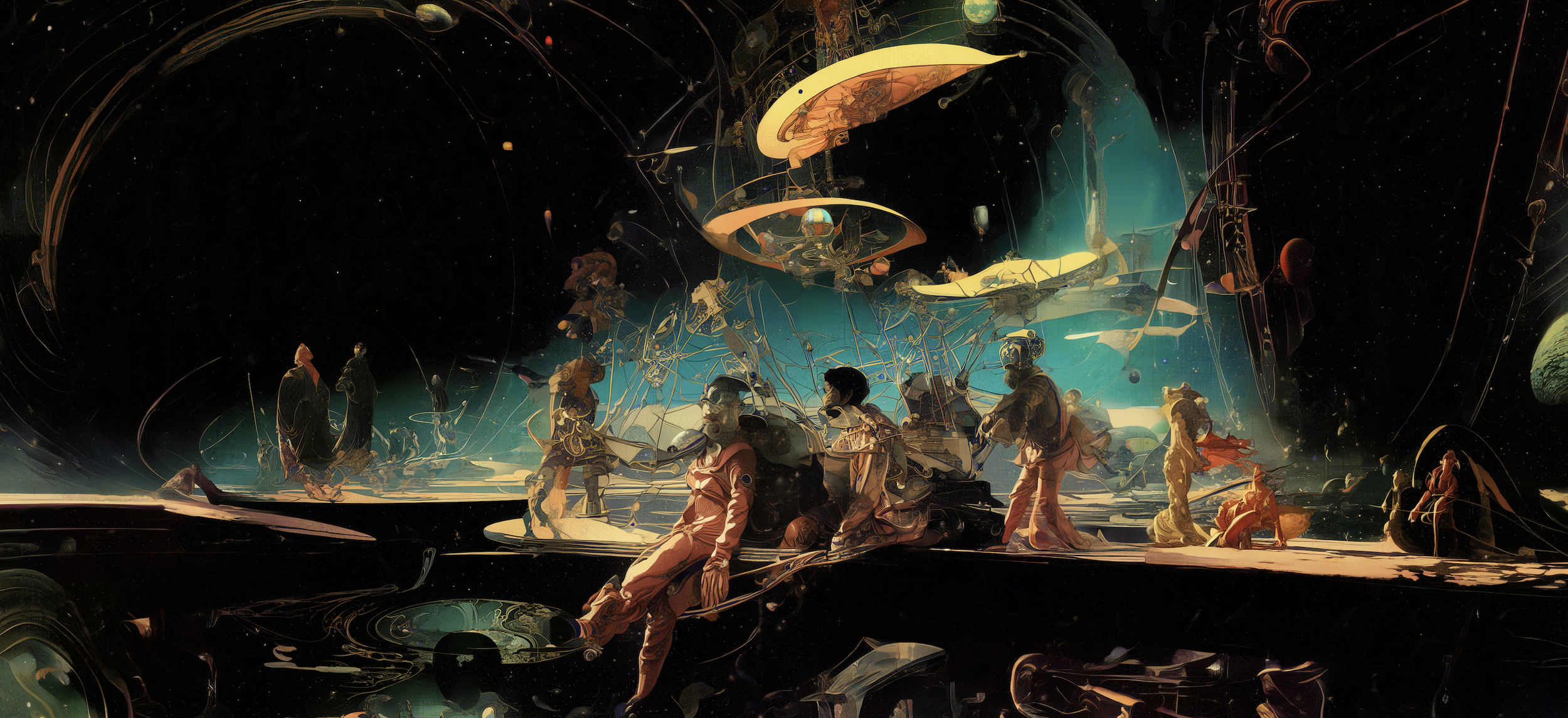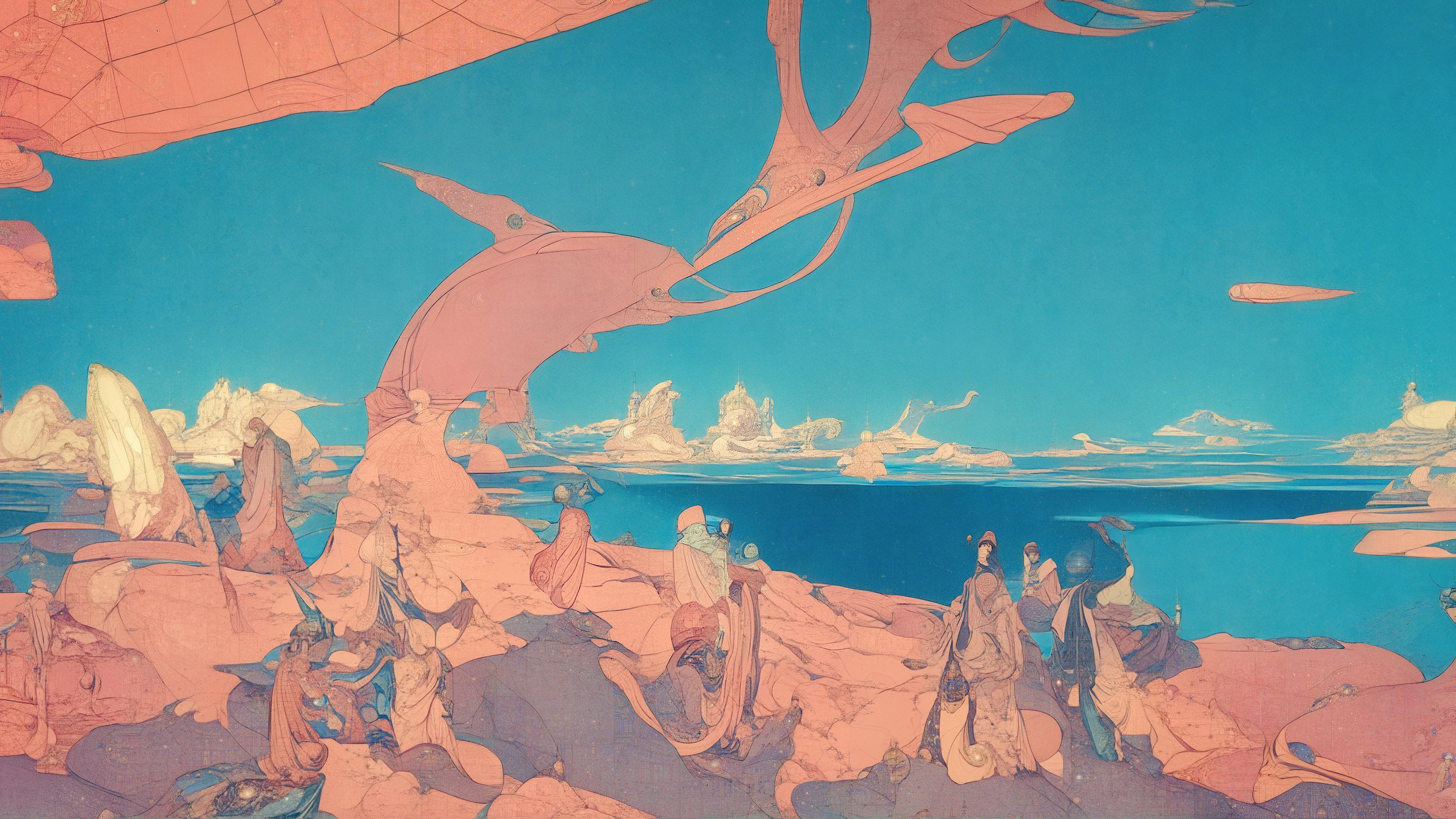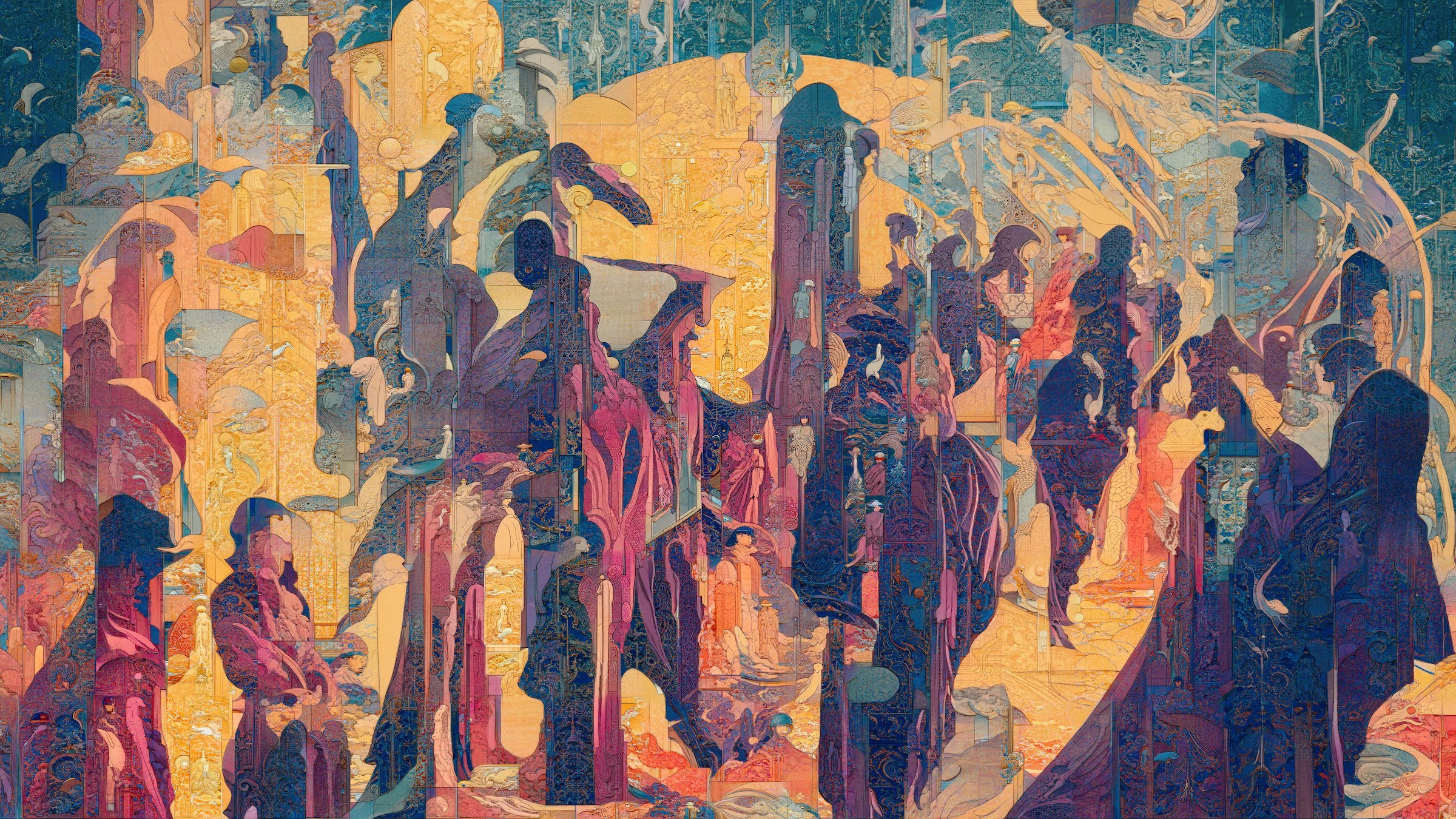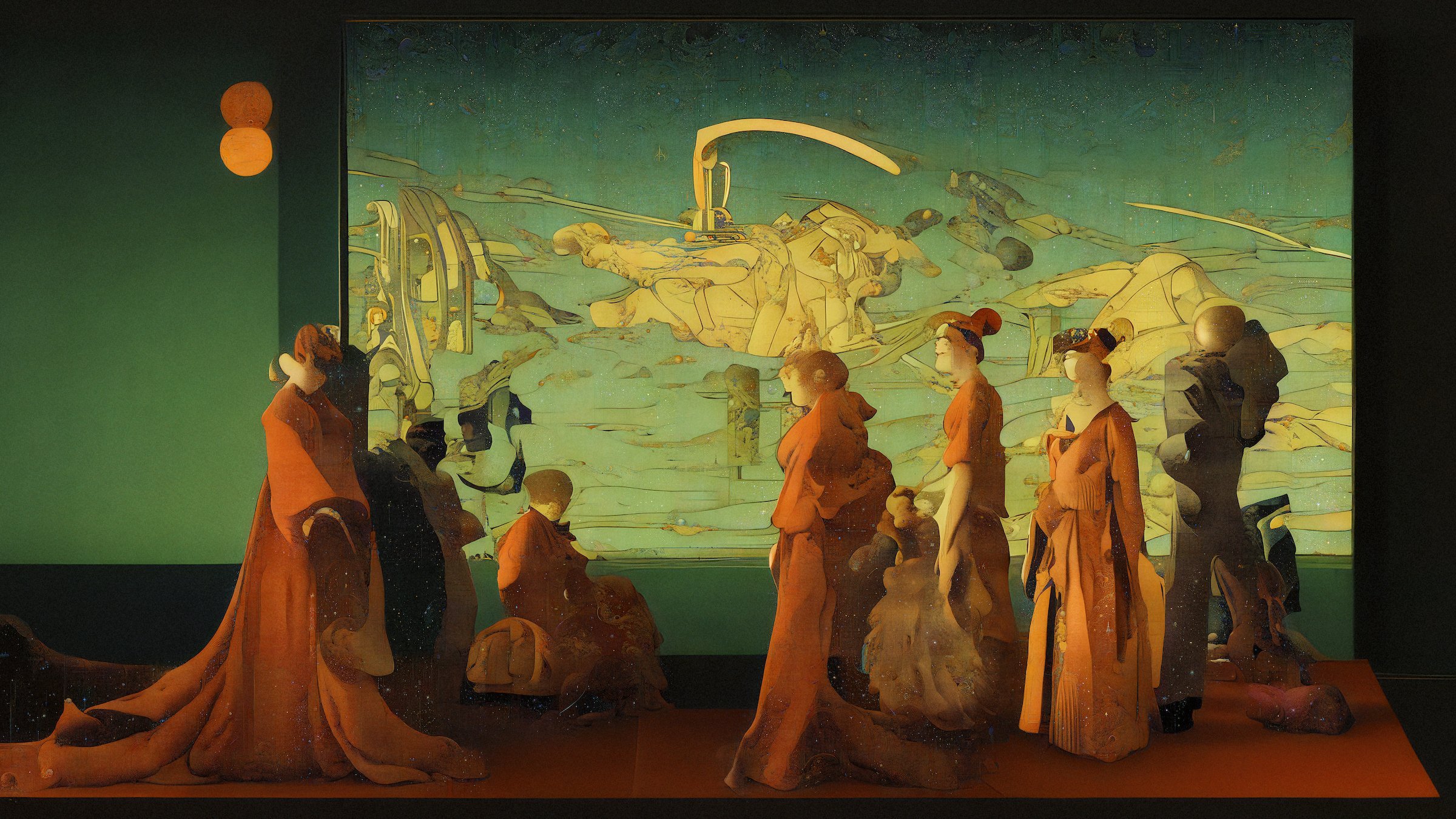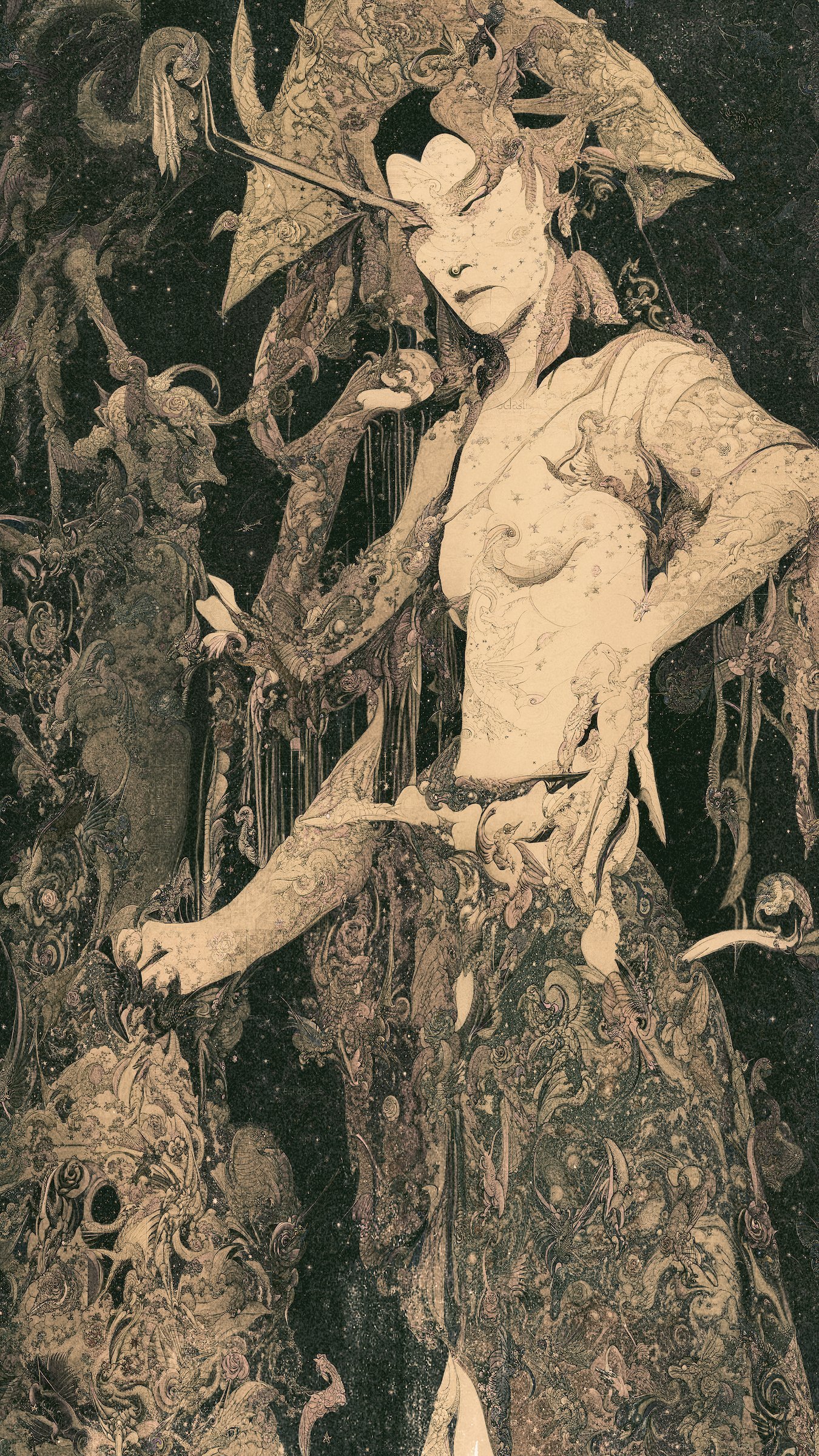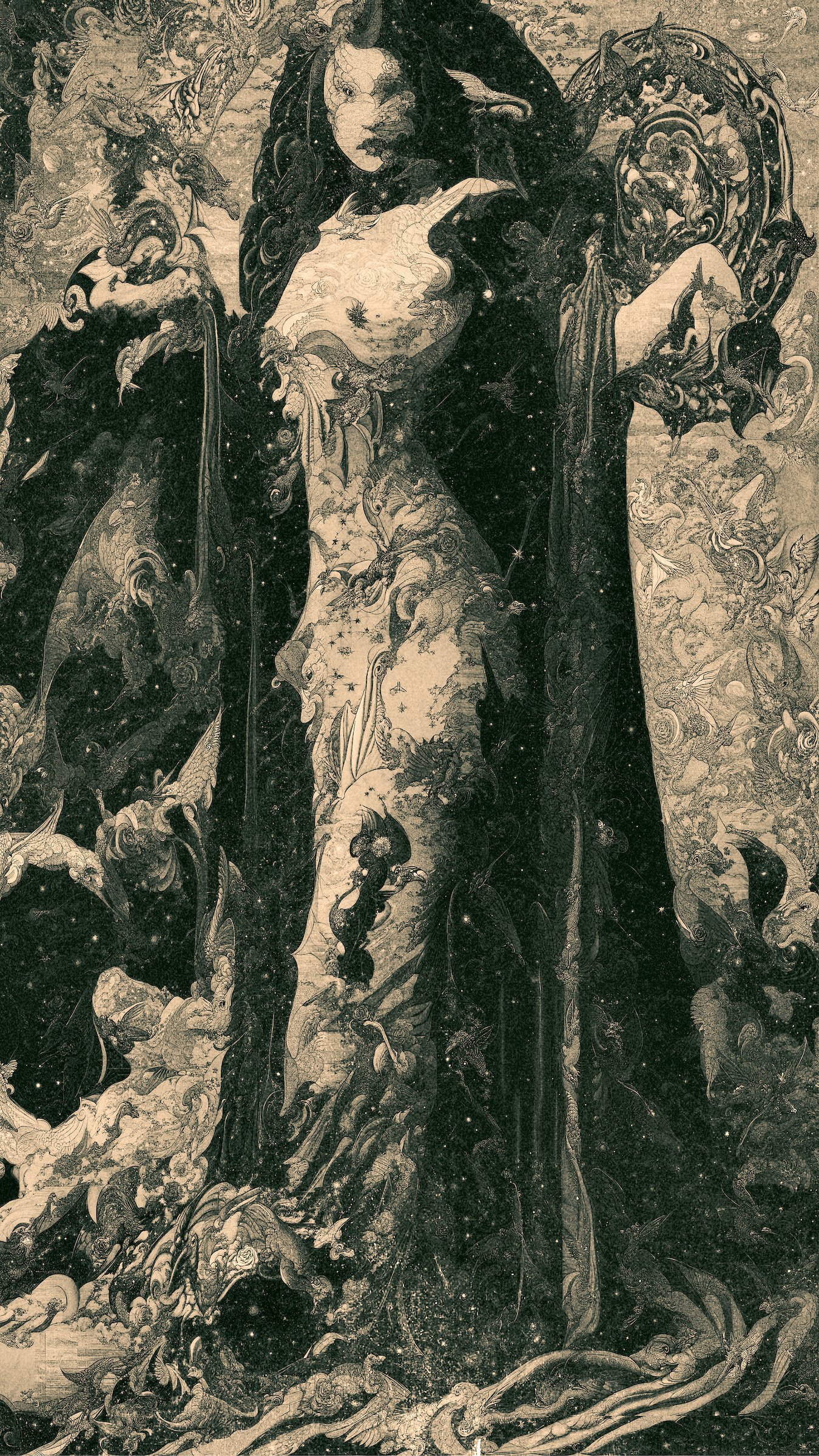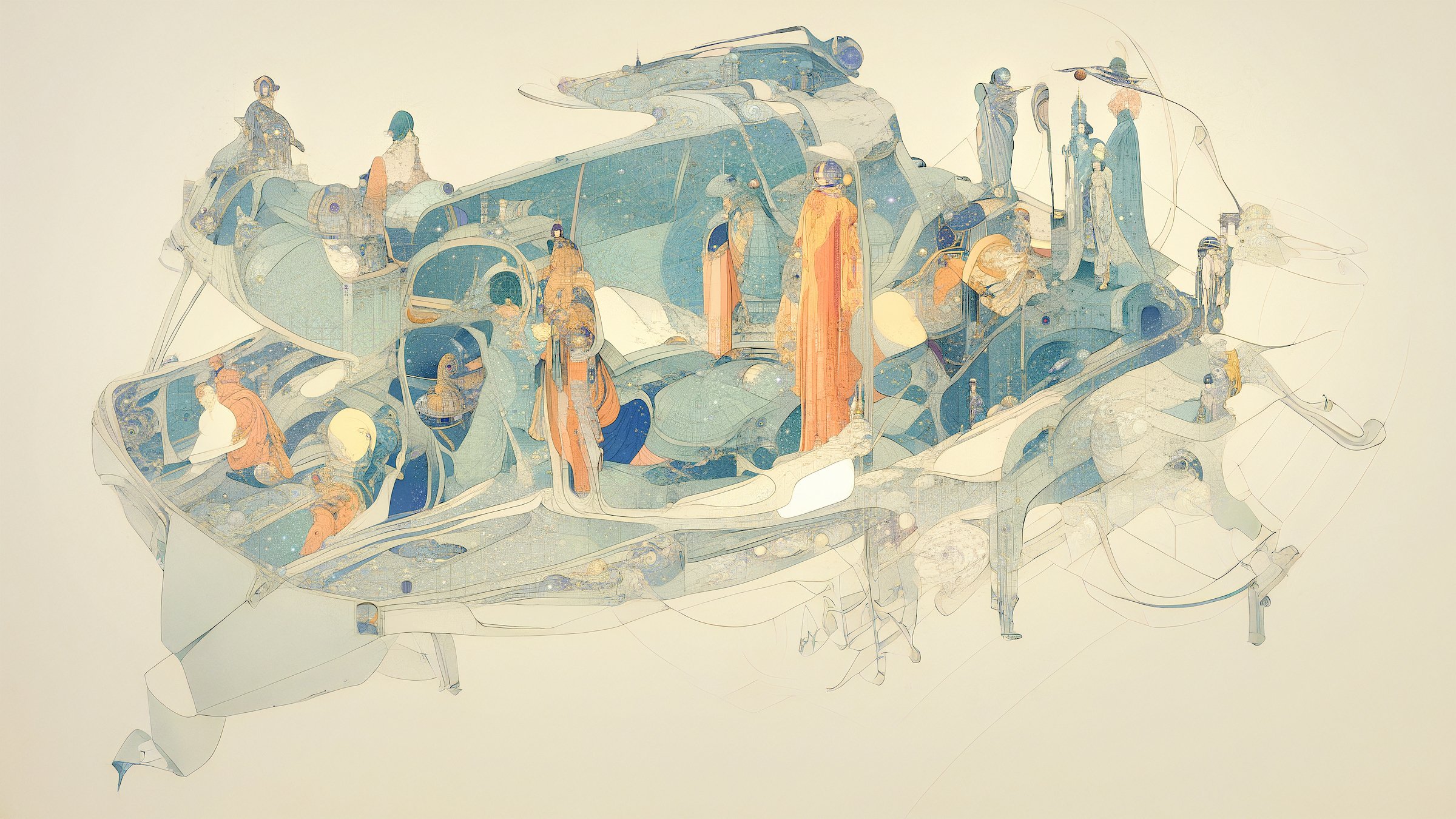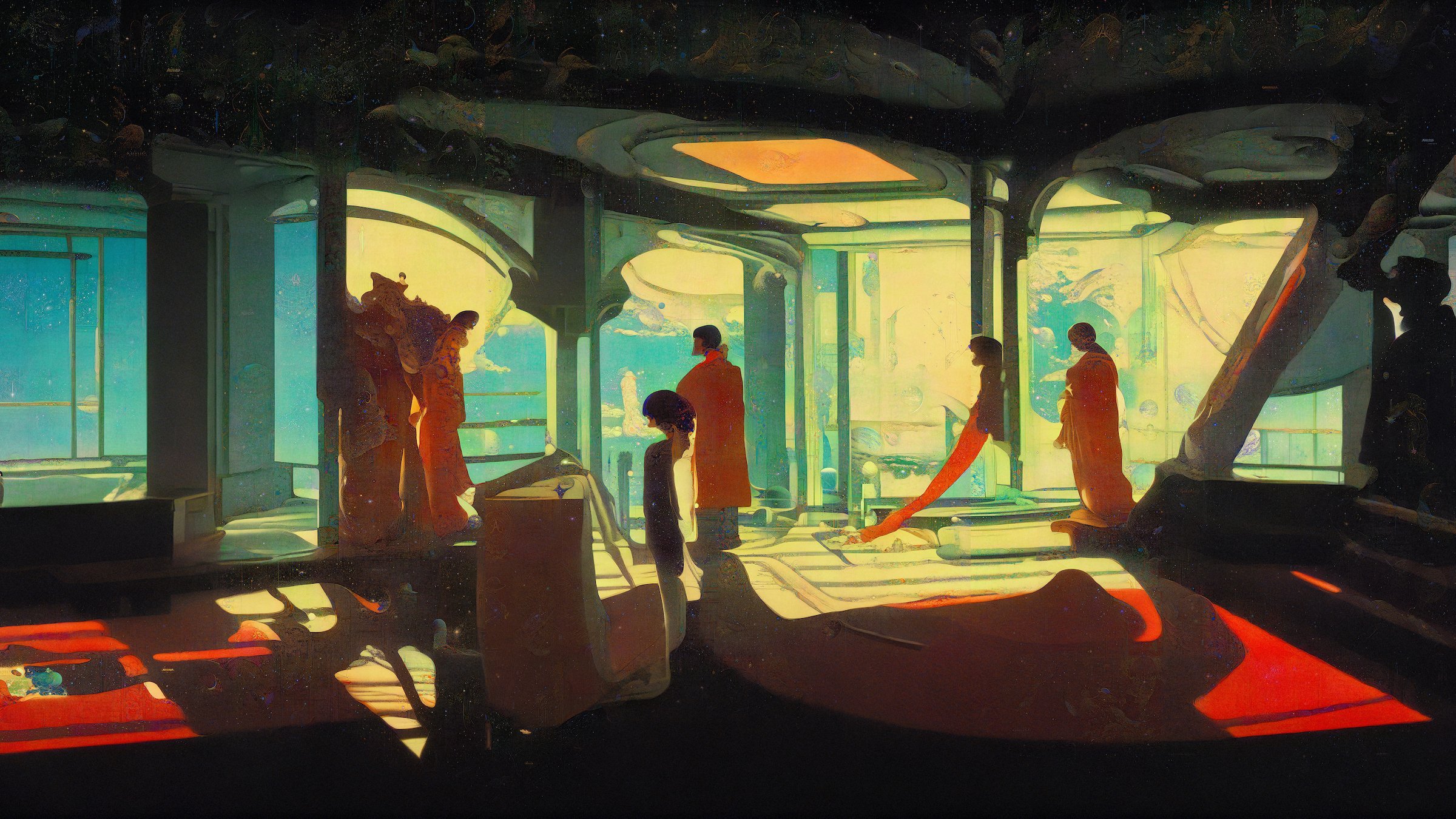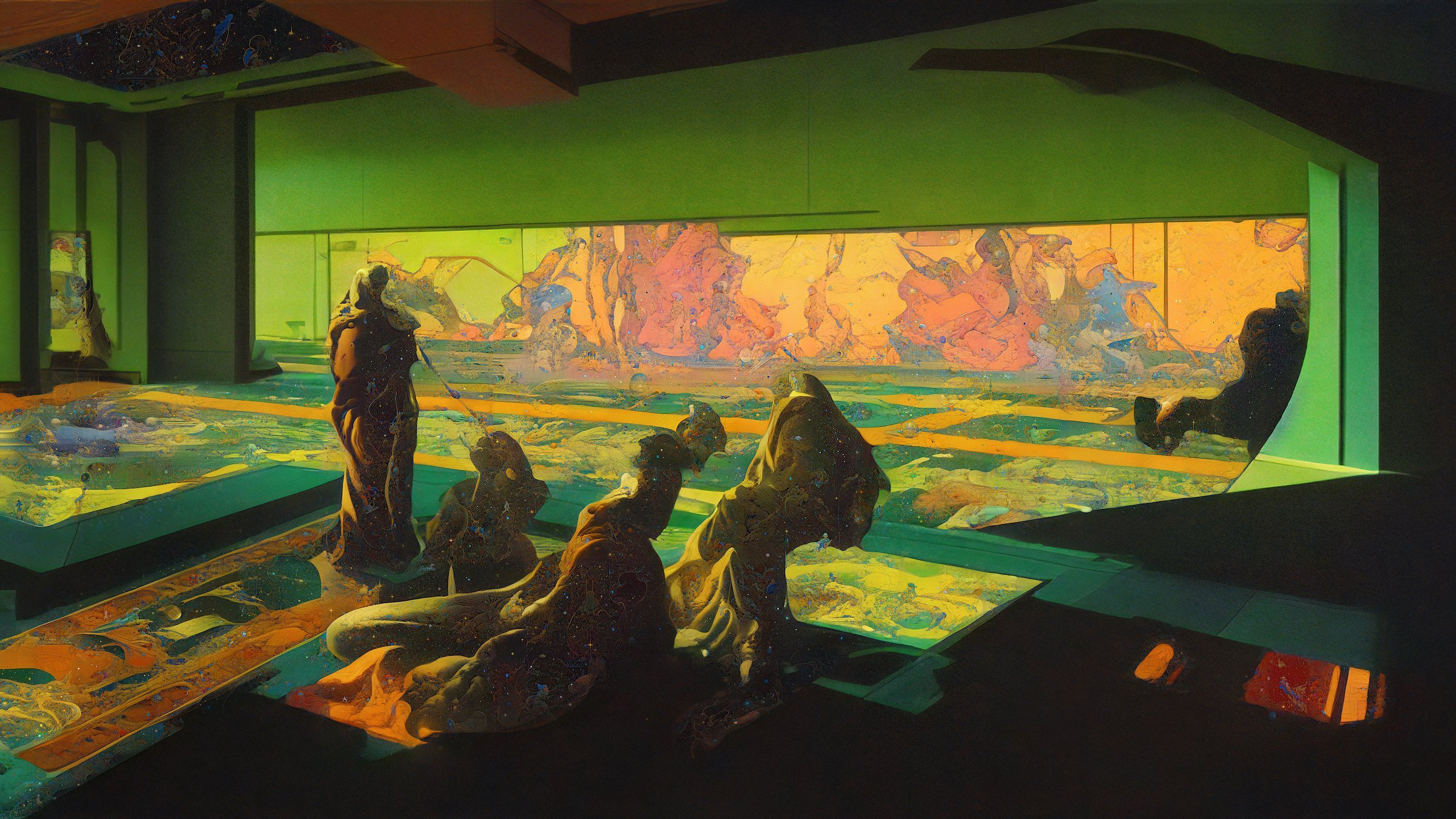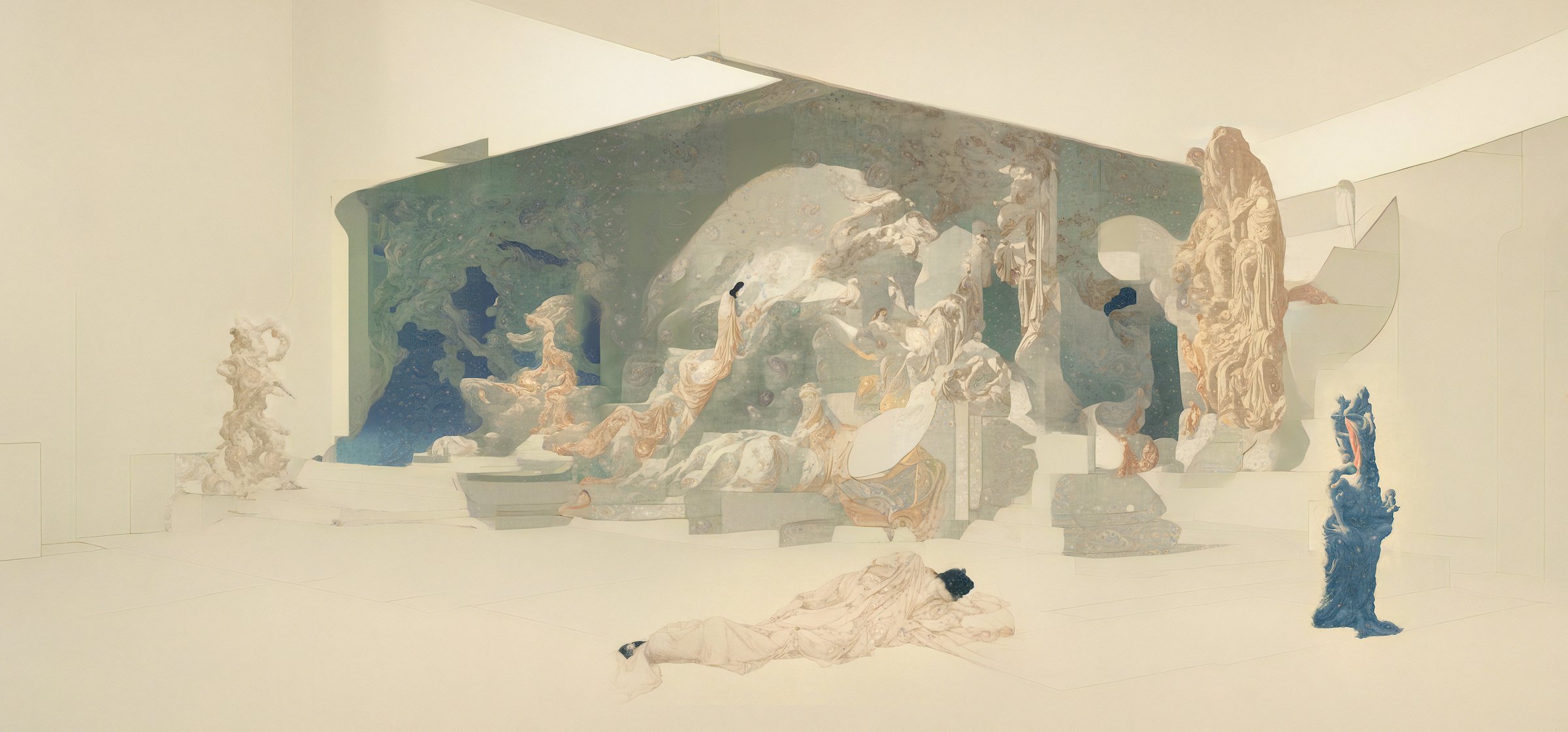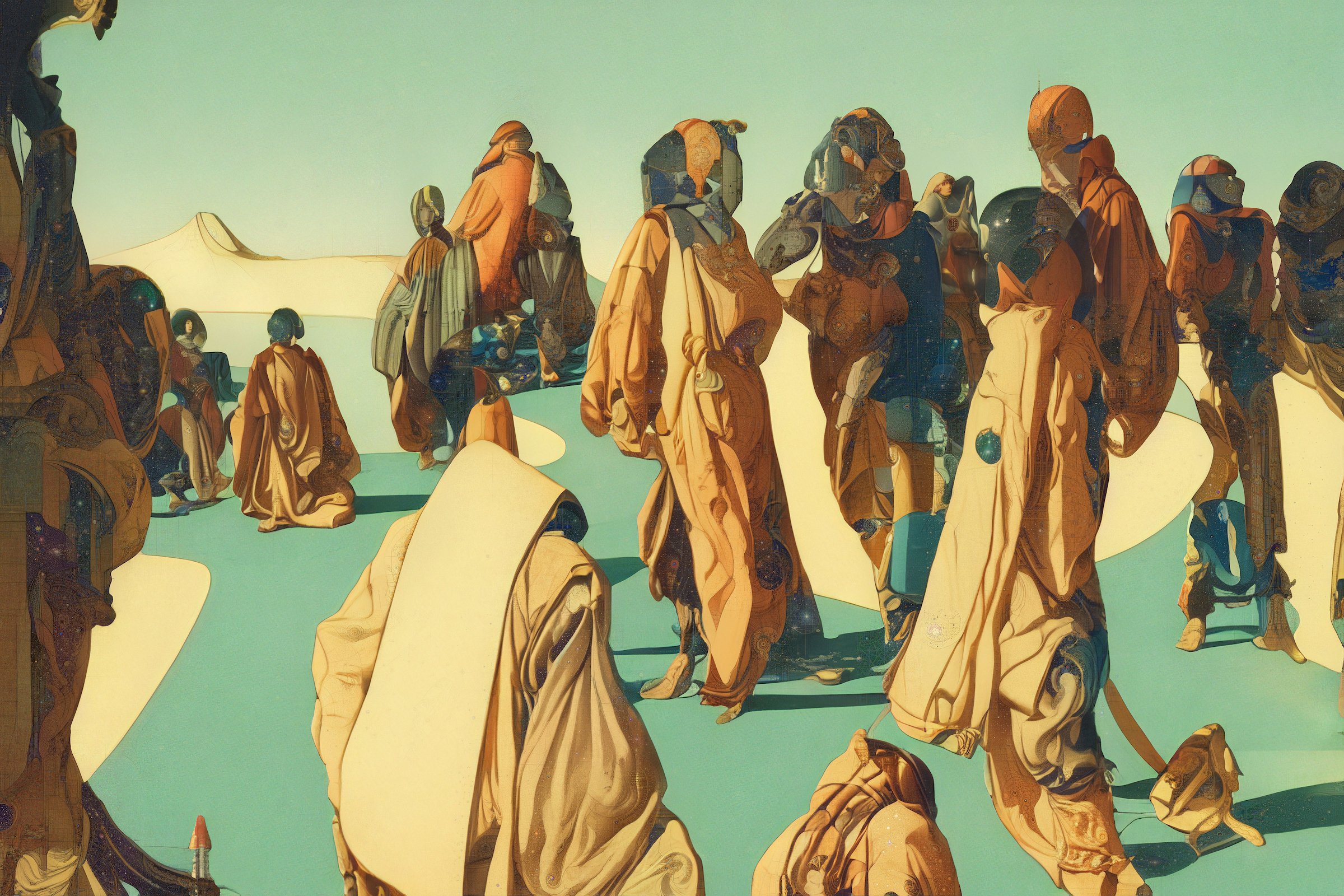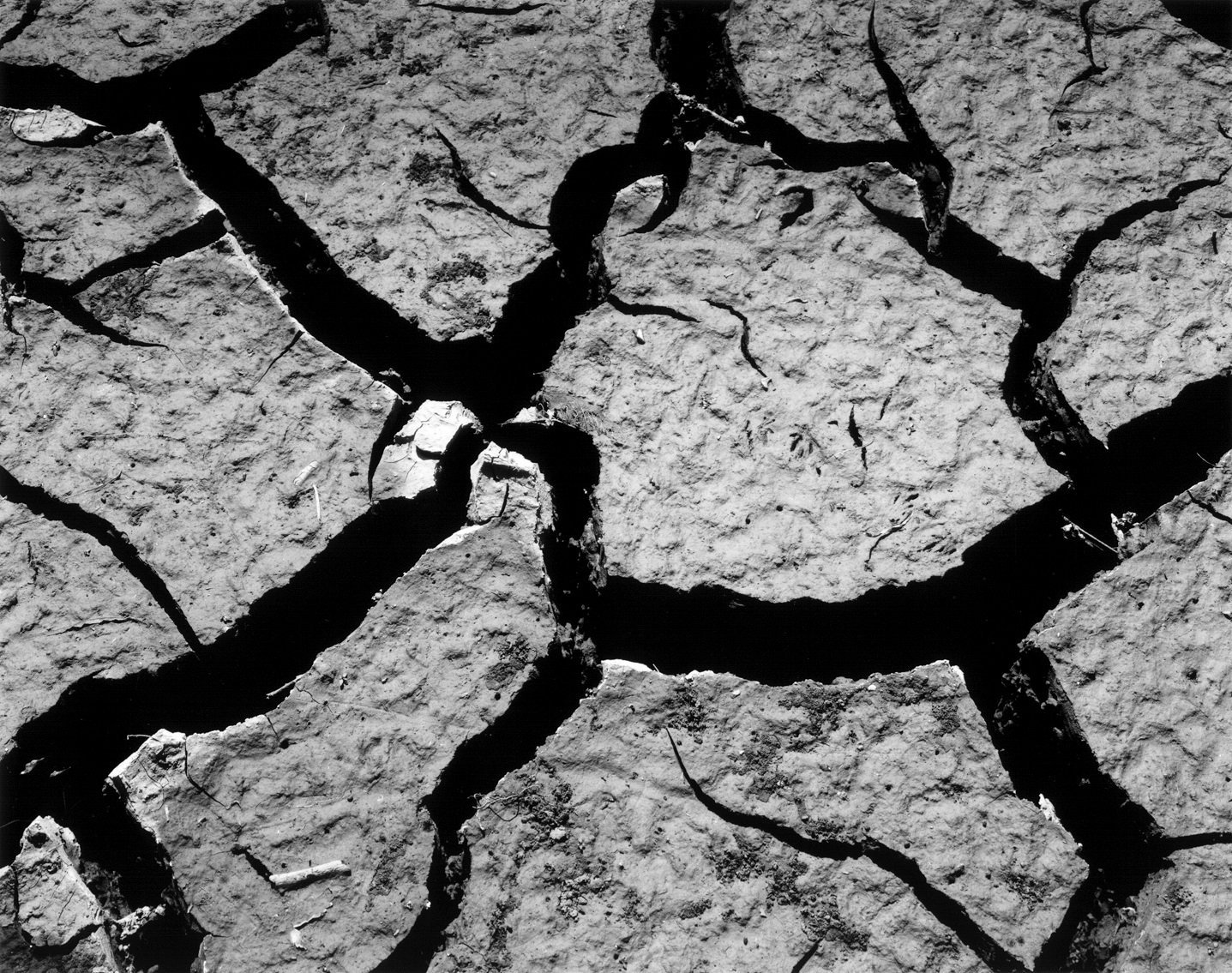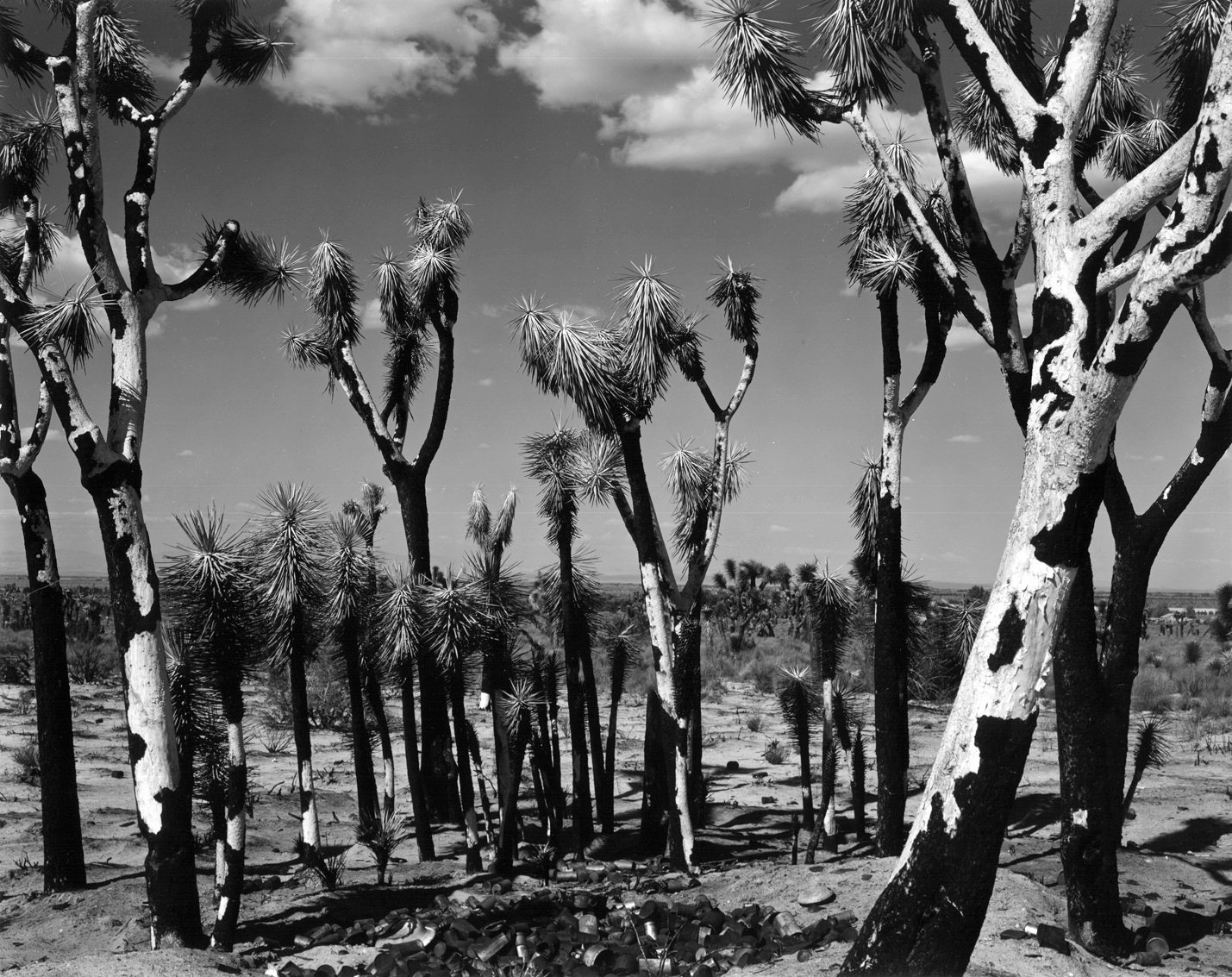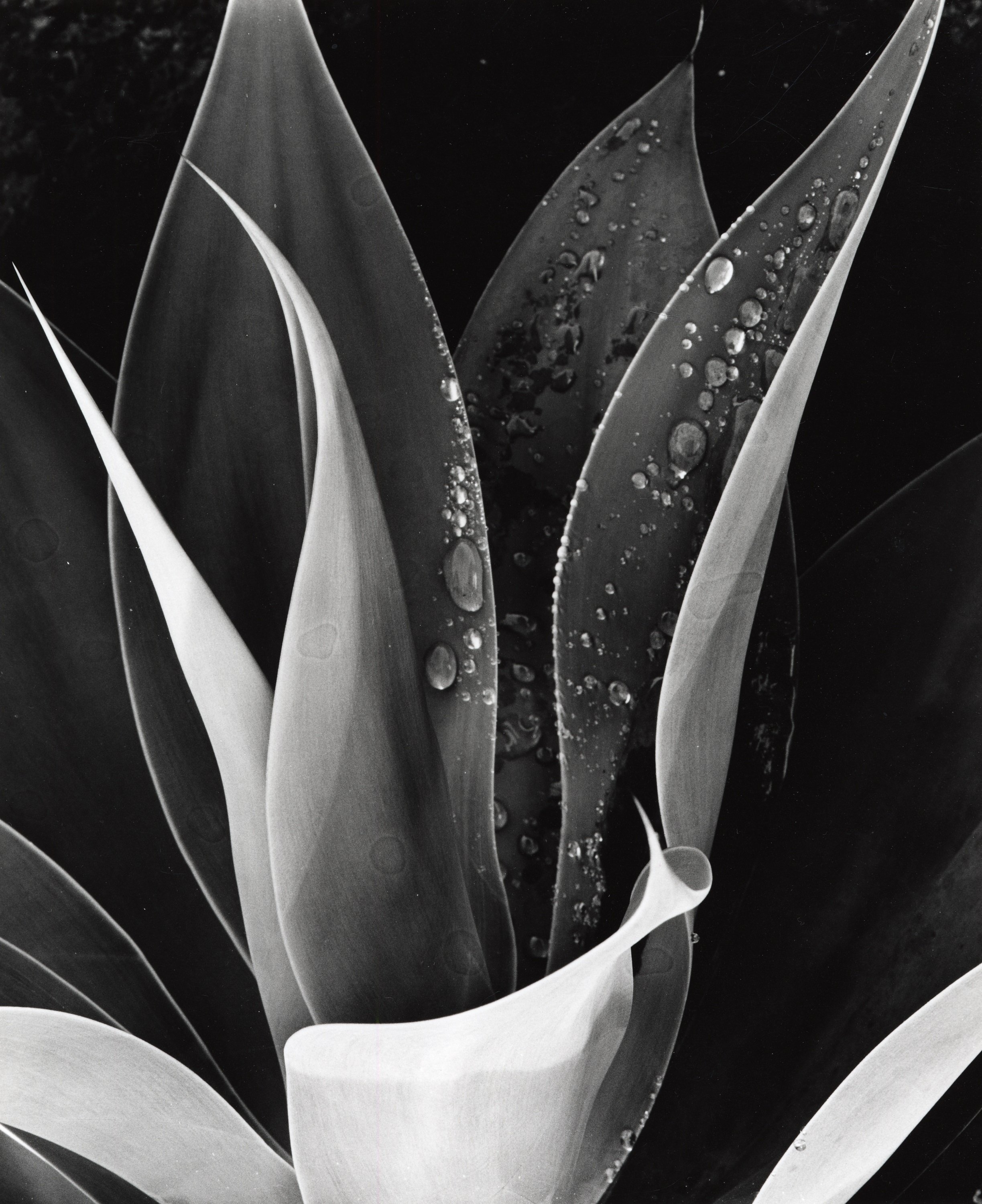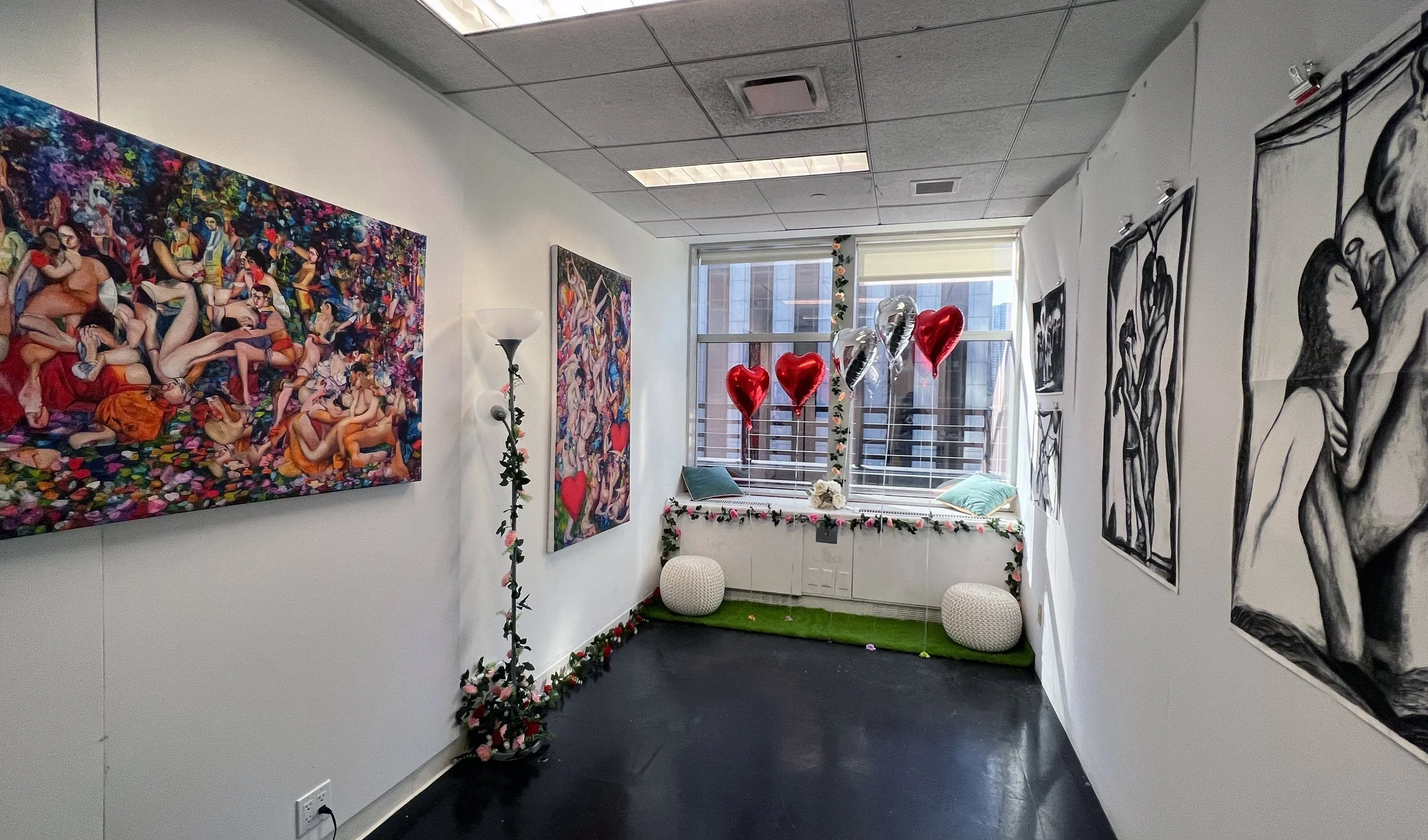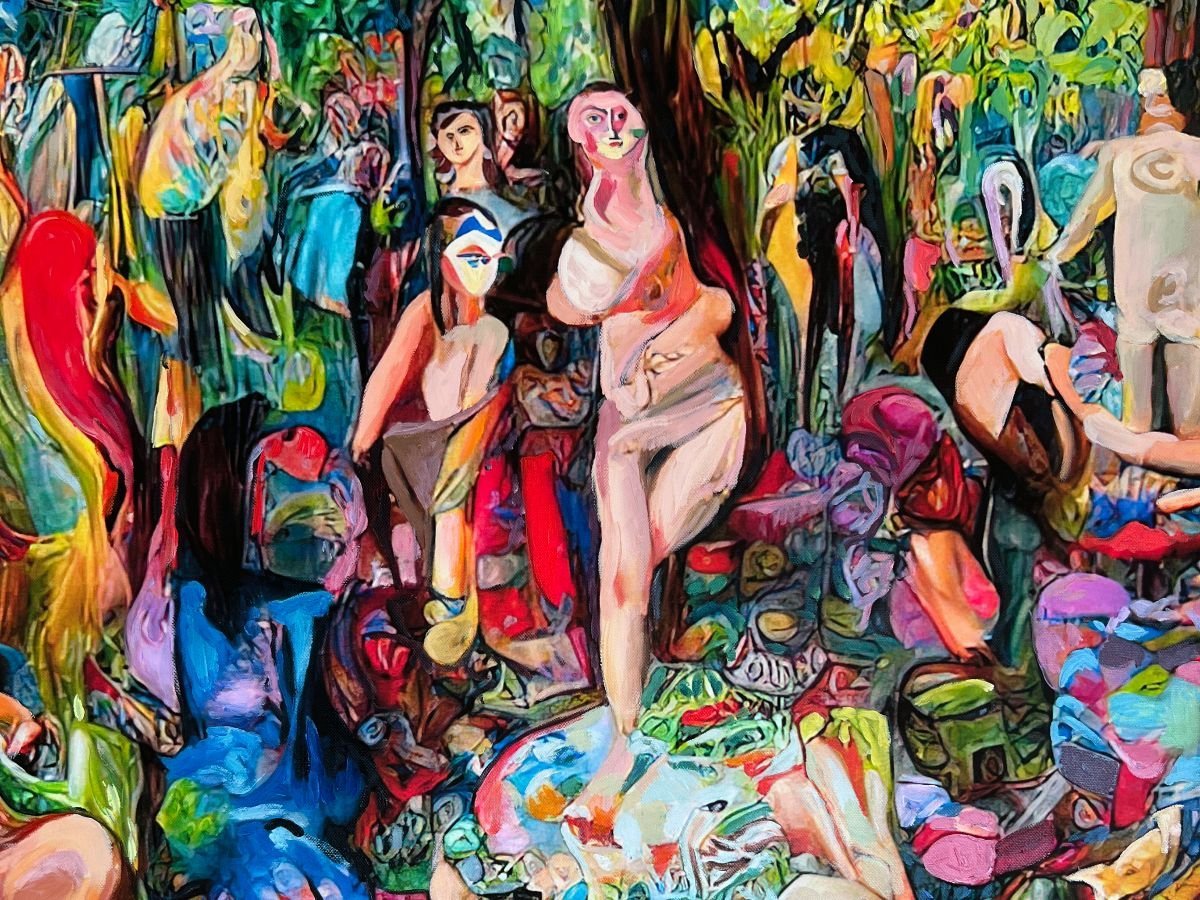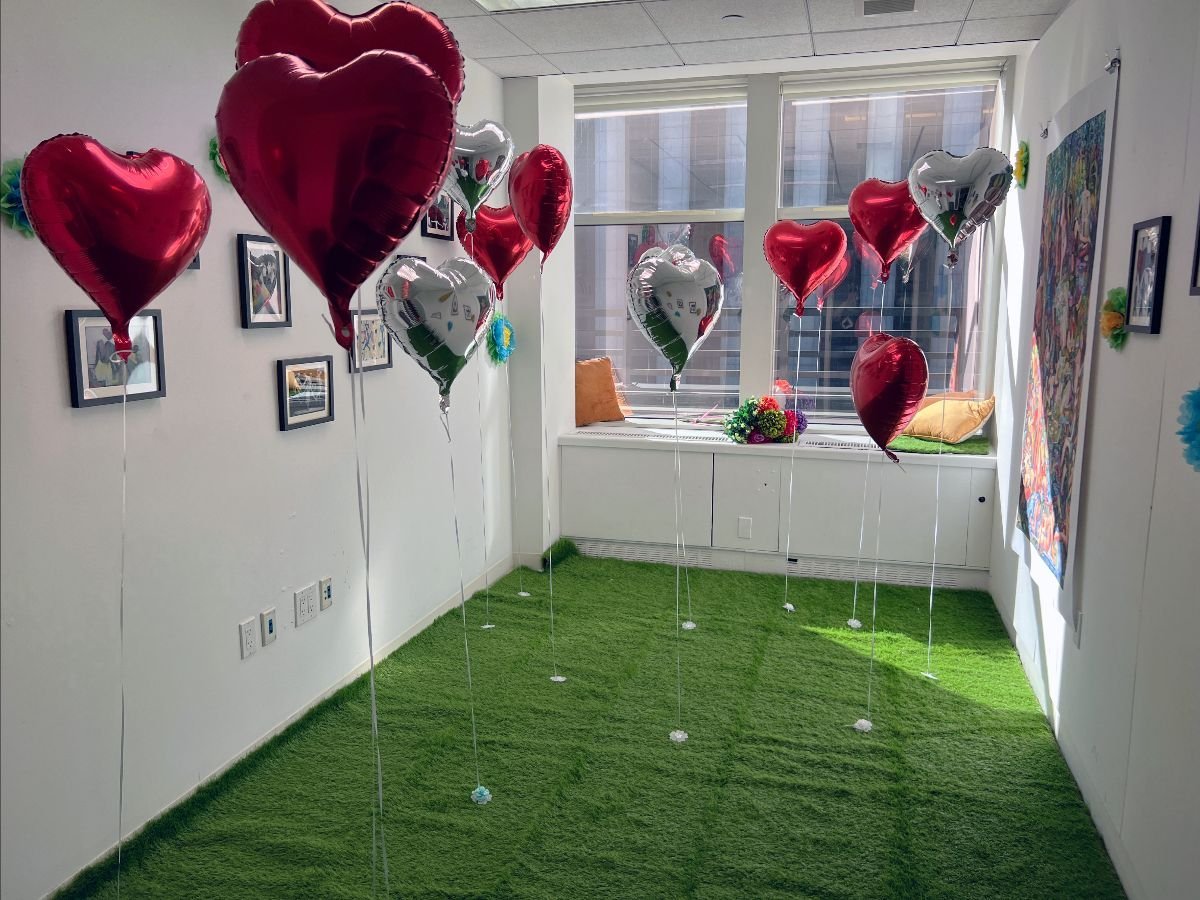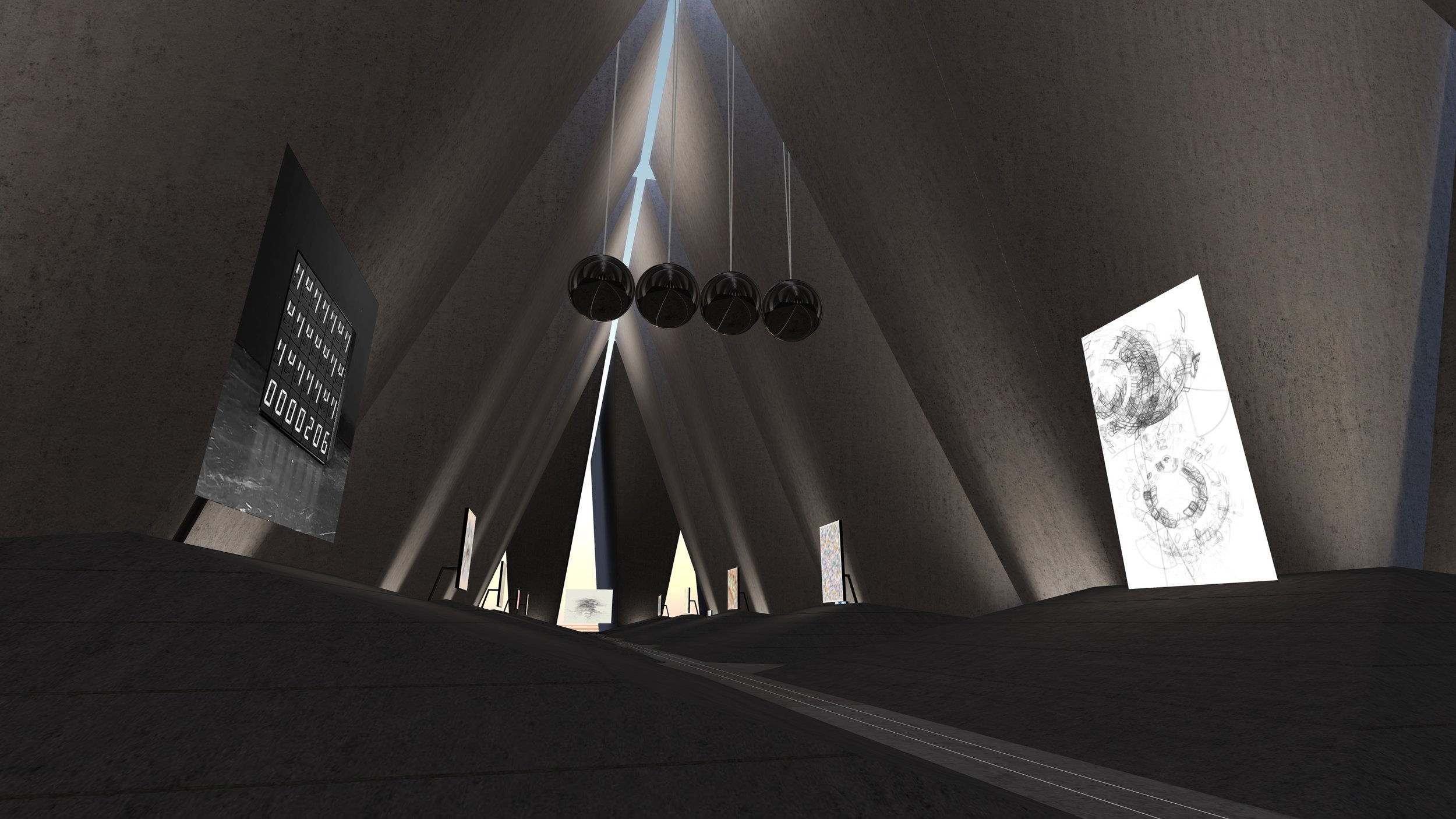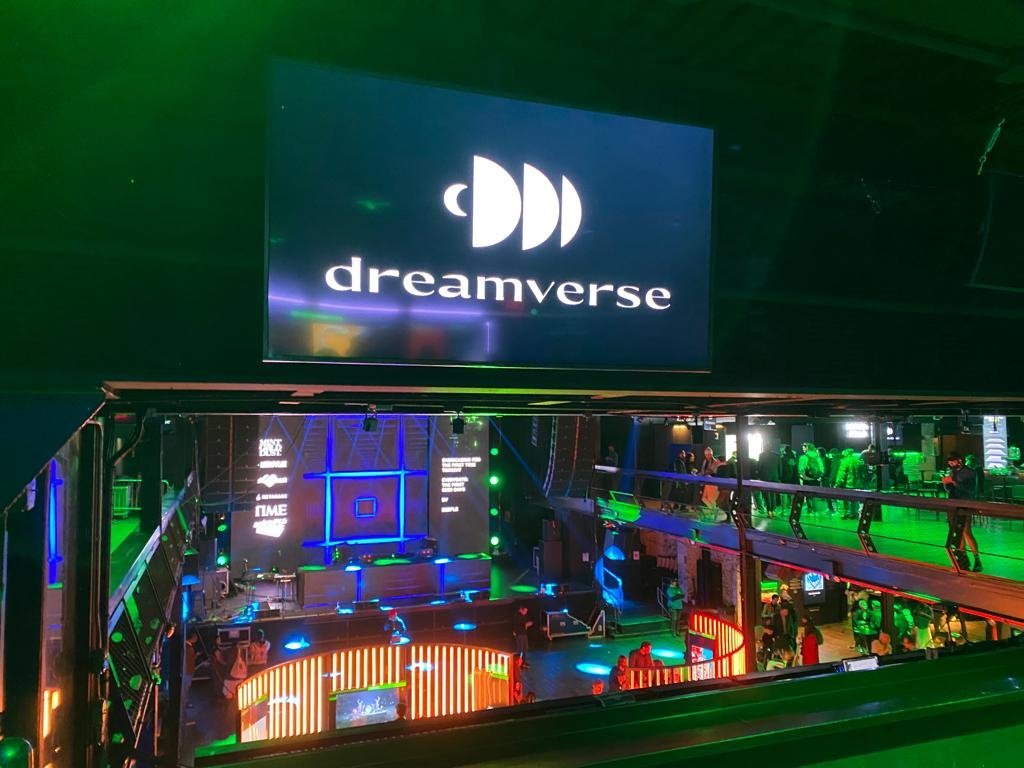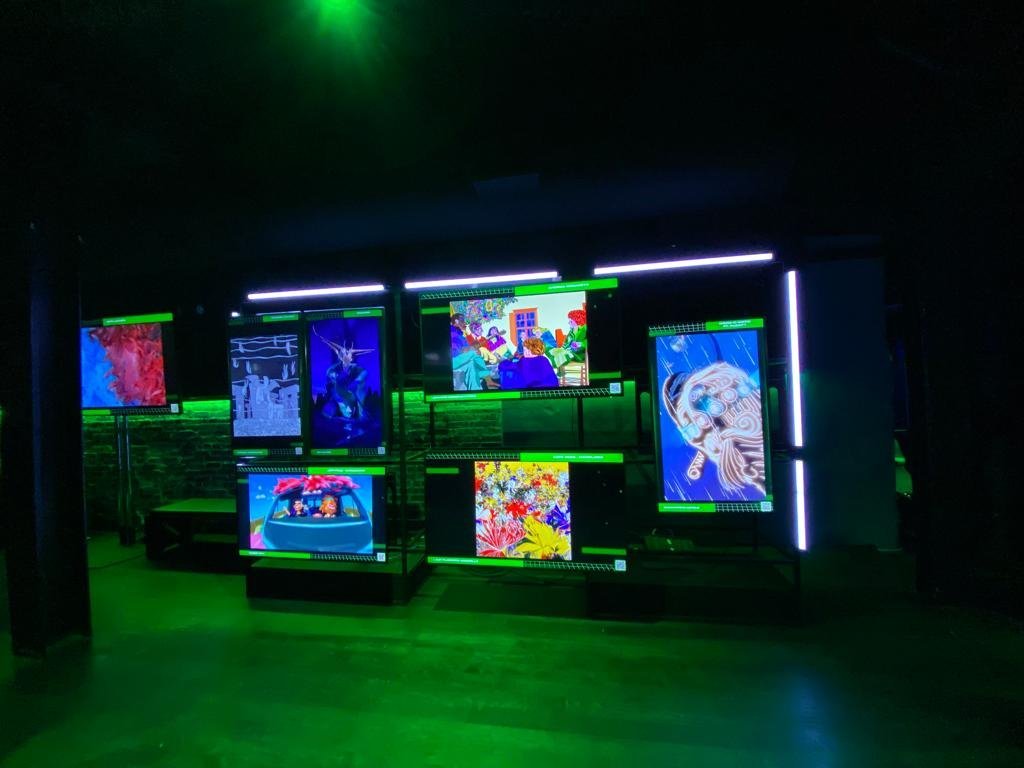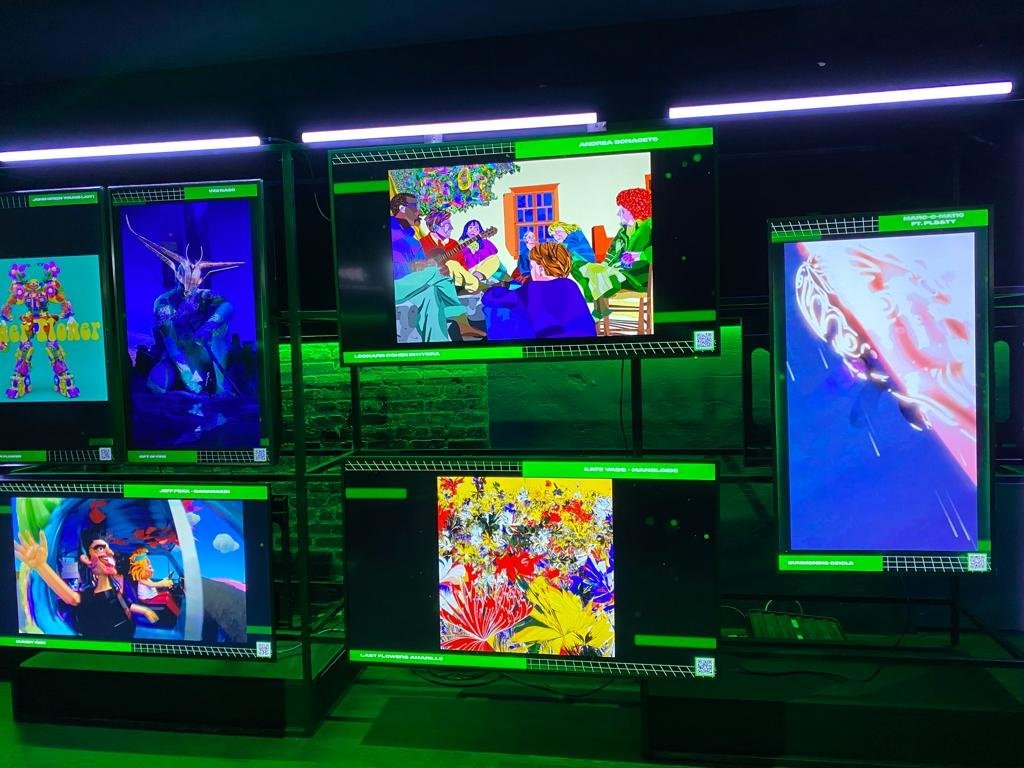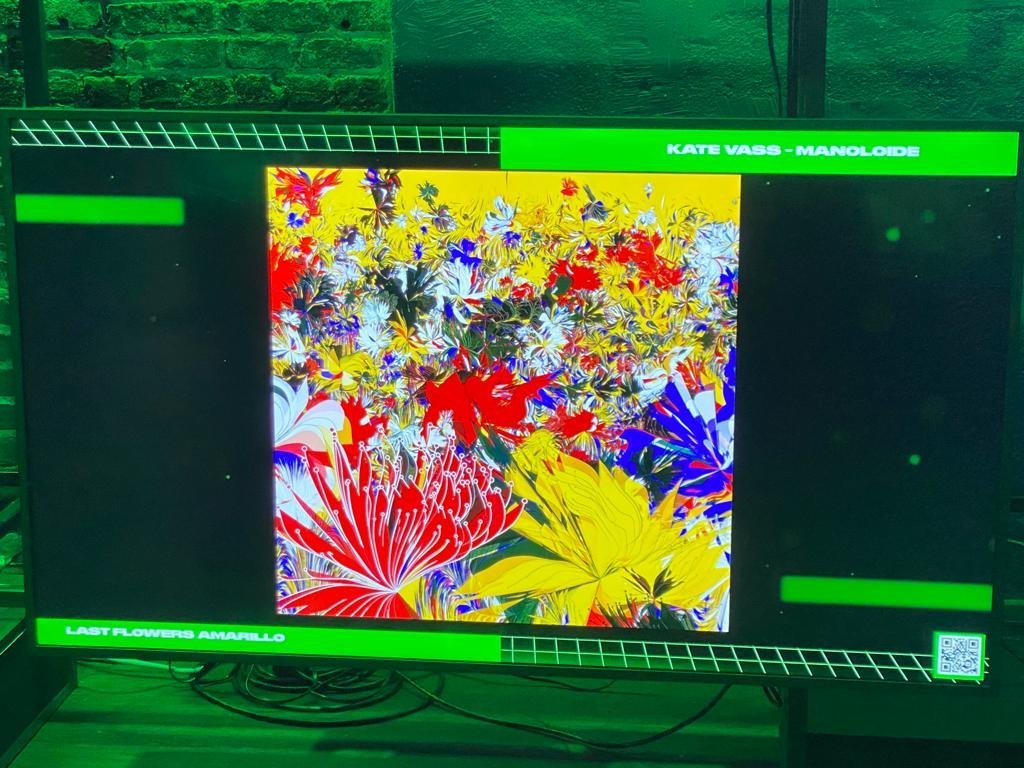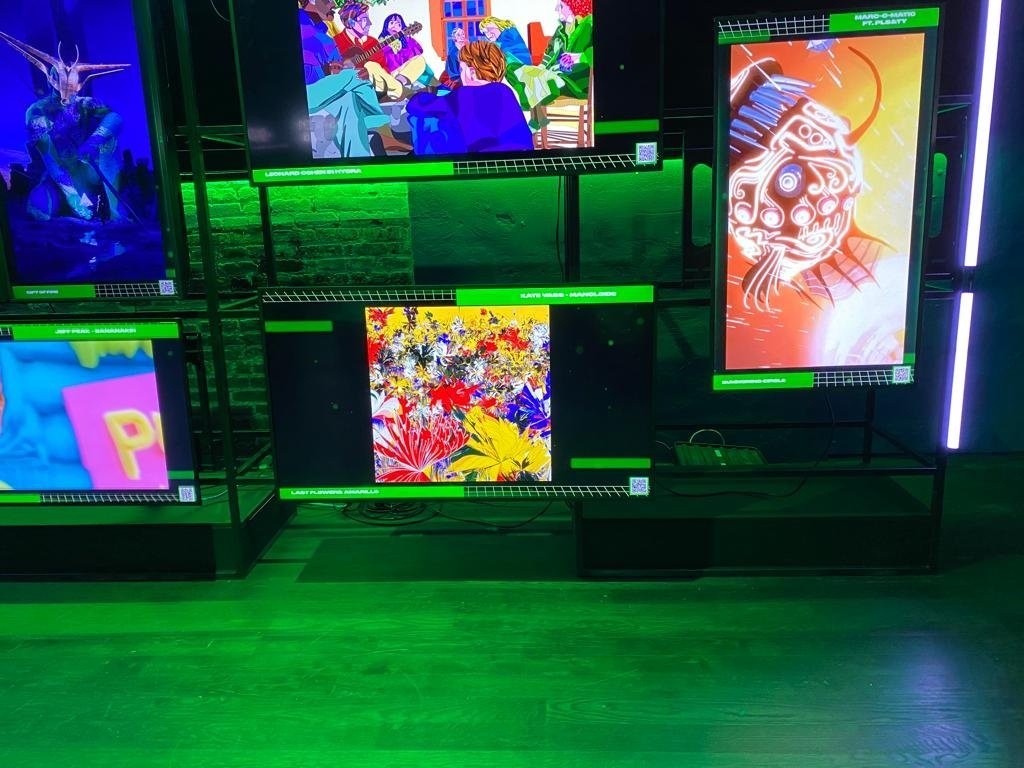WHEN THE ARTISTS MET THE ALGORIST
After a pioneer of generative art reached out to RCS, the community jumped at the chance to talk to Roman Verostko
Interview with Roman Verostko by the community on RightClickSave.com, November 11, 2022
Credit: Roman Verostko, The Magic Hand of Chance — In Praise of Petrus Ramus (detail), 1982-85. Image: RightClickSave.com
Roman Verostko’s importance to the history of generative art is unquestionable. A recipient of SIGGRAPH’s Distinguished Artist Award for Digital Art back in 2009, his legacy is evident from the artist’s online archive, which elaborates his remarkable journey from Benedictine monk to a leading figure among The Algorists. Historical TV footage like this from 1989 is a reminder of Verostko’s vital importance in bringing the conversation around art and technology to a mass public audience.
At a moment when generative artists are renewing painting, Verostko’s brush plottings prove that the physical and the digital have always been in dialogue. His work also unites Western and Chinese traditions in a way that foreshadows the global conversation that has become a hallmark of digital art since the NFT. Today, RCS is pleased to bring together two generations of artists in a conversation for the ages.
Alex Estorick: What distinguishes The Algorists from other artists working with computation?
Roman Verostko: The term “Algorist” applies to those artists who write code to generate art. I was a professional artist, exhibiting a retrospective in 1965, and brought certain mature ideas with me in my approach to writing code. My goal was to bring my art-generating ideas into software itself, so that it becomes a kind of artificial intelligence with the knowledge to execute visuals and concepts that I had in mind.
From the very beginning, my entire process was a confrontation with personal experiences that I translated into visuals. I always worked with visual oppositions and came to understand interactive color from studying Josef Albers. For example, why is it that if I place a red and a green of the same value and density of hue side by side, they produce a vibration and complement? In philosophy and theology there are extremes and experiences that are in conflict with each other that I have tried to resolve. In my art, I created contradicting structures in the same field, trying to bring them to a resolution. I even gave my code the name, Hodos, meaning “way” or “passage” in Greek.
When Jean-Pierre Hébert [who wrote the Algorist Manifesto] and I spoke, one of the things that was clear to us was that the coded procedures that embody an artist’s concept of art-making are unique. An artist like Manfred Mohr writes all his own software, and the code itself embodies a generative concept that is unique. That is an Algorist. I looked to artists like Harold Cohen and Vera Molnar, who understood that.
Browse Roman Verostko, Vera Molnar, Mandred Mohr and Harold Cohen’s work here.
THE CURRENCY OF RARITY
A cast of prominent collectors shares its strategies and favorite pieces with Ryan Roybal of NFT Collective
Interview with Kevin Abosch, Merel van Helsdingen, Ganbrood, Iskra Velitchkova, and thefunnyguys by Royan Roybal on RightClickSave.com, November 3, 2022
shxmxskx, (Still from) Takoma, 2021. © shxmxskx, Image: RightClickSave.com
Ryan Roybal: How would you describe your approach to collecting?
Kevin Abosch: I collect artworks for different reasons, but the driving motivation is my desire to fully experience a work. One aspect of NFTs that I particularly appreciate is that they are non-invasive. When one collects a large painting, unless it is destined for storage, the work takes its place on a wall. It occupies space. For better or worse it invades that space. In this sense, NFTs are less of a burden. One can have thousands of NFTs, which allows one to choose when and how to appreciate them. For this reason, I am certain that there are digital works I’ve collected that I might not have had they come with the burden of taking up physical space.
Sofia Crespo, soft_colonies_1898, 2022. © Sofia Crespo, Image: RightClickSave.com
Merel van Helsdingen: My approach to collecting is to buy pieces which have activist impact or make historical reference to the new media art world. This might be a work by Herbert W. Franke or from his Tribute, or else Operator and Anika Meier’s conceptual artwork, Unsigned (2022), which sought to confront the art world’s gender pay gap by collating signatures from 100 women and non-binary artists and selling them as NFTs to assert their real value.
For me, art that involves programming should live on the blockchain and I think it will only grow from here. But art on the blockchain is also a really interesting genre within new media art.
Ganbrood: I have always been a collector, starting with comic books when I was nine years old. I still own more than a hundred handheld computer games from the early 1980s, from Donkey Kong on Nintendo’s Game & Watch with LCD display to a tabletop Pac-Man with LED.
As the son of two artists who grew up in Amsterdam’s museum district, my love for art started at an early age but, prior to NFTs, I didn’t have the means to collect the majority of works that I really liked. Before I began minting my own work, I was skeptical about buying digital editions myself, but after a few days on Hic et Nunc in March 2021, I became totally hooked on collecting. I spent my last savings on works I loved — the FOMO was strong with this one. When I encountered a work that resonated with me and was affordable, I bought it. My behavior as a collector has always been quite erratic and intuitive because it was mostly driven by passion. After more than a year of collecting at an average of 15 tokens a day, I have cooled down a little.
Iskra Velitchkova: I follow two very basic principles. Either I collect pieces that I just like or they resonate with me or else works that I think will be relevant in the future. The market goes too fast for me and I don’t follow the trends much. I would like to create a nice collection without any rush and enjoy the process. I feel that we are living in a really significant moment in art and I am proud of each and every piece that I collect. I don’t think I’ve ever sold a work on Tezos — they are all for me and for my “future me.” Beauty rules every decision I take without any financial pressure.
The international group exhibition «Dear Machine, paint for me», that trace a broad spectrum of algorithmic art.
\.
Kate Vass Galerie & elementum.art opens the group exhibition "Liebe Maschine, male mir”. Curated by Georg Bak and Kate Vass, the exhibition showcases new artworks by Frieder Nake, Hein Gravenhorst, Alexander Mordvintsev, Manfred P. Kage, Herbert W. Franke, Ganbrood, and Espen Kluge, that trace a broad spectrum of algorithmic art.
Creating art has always required technical aids, be it hammer and chisel, paint and brush or, in the technological age, algorithms, graphics programs and artificial intelligence. Central perspective was invented during the Renaissance, and Albrecht Dürer drew the perspective of the landscape using the so-called Dürer disc (a glass panel device). We live in an exo- evolution - to put it in the words of Peter Weibel - in which tools expand our physical and mental abilities. Martin Kippenberger even went so far as to hire professional poster painters to paint pictures for him in his series of works “Lieber Maler, male mir” (Dear Painter, Paint for me). This is how you can roughly imagine the "pas de deux" between the artist-programmer and the computer. The artist sets the stage by programming an algorithm, while the machine delivers the output. Controlled coincidence can play a significant role, and unforeseen disruptive factors can occur at times. Claude Shannon's communication theory defines these as "noises" which would eventually become an artistic medium called "glitches". In the final act, however, the artist usually decides whether he considers a picture good enough or rejects it. It is also possible to leave a generative work of art as the machine accidentally completed it. Then it is up to the viewer to assign a higher aesthetic value to one or the other piece of art. Sometimes it is purely arithmetical qualities, such as the rarity of a feature, that determine the value.
Clip from Frieder Nake’s "Hommage à Gerhard Richter" Genesis kinetic NFT drop created in 2022.
Based on the theories of Max Bense and Abraham Moles, the first generative works of art were created in the 1950s and 1960s. One of the founding fathers of computer art is Frieder Nake (a former student of Max Bense), who designed his first programmed plotter drawings at the Technical University of Stuttgart in 1963 and visualized them on the "Graphomat'' (ZUSE Z64) drawing machine. Nake dedicates his Genesis NFT “Hommage à Gerhard Richter”' to the painter of the century, Gerhard Richter, in his most recent work of art. One of his best-known works is the "Hommage à Paul Klee", which was created in 1965 and paid tribute to the Bauhaus artist by the principle of chance. "Chance is better than me," Gerhard Richter was once quoted when he made colour charts based on algorithms. In Frieder Nake’s hommage, an algorithm continuously generates Richter's striped images in endless variations.
Clip from Hein Gravenhorst’s new kinetic work, translation-0004-1.5, created in 2022.
With similar virtuosity, Frieder Nake's contemporary Hein Gravenhorst creates psychedelic digital transformations. Along with Gottfried Jäger, Pierre Cordier and Kilian Breier, Hein Gravenhorst is one of the co-founders of generative photography and, in the 1960s, developed photomechanical transformations that were created through countless exposures in the darkroom. His most recent works have transformed these patterns, reminiscent of mandalas or medieval rose windows, into hypnotic computer animations.
Clip from Alexander Mordvintsev’s new kinetic work, titled “Autumn Red”, 2022.
One of the recent pioneers of digital art is Alexander Mordvintsev, who conducts scientific research at Google on visualizing deep neural networks. The artist became well known for his invention of the Deep Dream algorithm, a special form of artificial intelligence that he launched in the summer of 2015.
In the "Liebe Maschine, male mir" group exhibition, Alexander Mordvintsev will present a new body of work from his latest series titled "Autumn Life". The visuals are created by a cellular automata based artificial life simulation and is inspired by the autumn forest and its delicate inhabitants.
Digital transformations over the last decades led artists like Ganbrood, a photographer and former computer graphic, to experiment with new tools, such as AI. Instead of using this method to generate variations on existing pictures, Ganbrood uses these neural networks (GANs) as a silicon muse to evoke and stimulate his expressive mind while at the same time interrogating the very essence of creativity: Could it be possible that a quality that was always considered as eminently human, is easily imitated or even reproduced by an algorithm? And when that is the case, are our fantasies and imagination may be controlled by mathematic expressions more than we would consider?
Like every artist is expanding on the work of their most revered predecessors, In 'S O M N I V M', Ganbrood uses visual themes that have always inspired him since youth: mythology and fairytales, theatre and film, painting and photography, videogames and comics. Drawing parallels in timeless variations of visual narrative by seeking their mathematical interfaces in latent space. Where a classicly trained artist like a painter or a sculptor would dig these shapes and symbols from memory, Artificial Intelligence is providing the present-day artist with the tools to draw references from synthetic storage, where the craftsmanship of brush and chisel are shifted to recognition and curation of artificial outputs.
Artificiality has always been a decisive element in Ganbrood's past work, whether using special effects and 3D animation for film or photographing actual events in a serene way that almost looked staged.
Always fascinated by illusions and trickery, Ganbroods ‘oeuvre’ is a voyage of exploration into pseudo-figurative and mind-altering effects like pareidolia, apophenia and synchronicity. This exploration takes an almost literal shape in "In this hard rock, whiles you do keep from me" and "This Island's Mine", where sci-fi elements of glorious space adventures meet Renaissancistic scenes. Set in a cinematic universe, the viewer can almost define the actors and decor of these who, after close inspection, turn out to be little more than abstract shapes.
Tragoidia and Les Filles du Roy are like stages. The elements of contradictory mediums like fresco paintings and photography or 3D are battling for the spectator's conclusion of how to interpret what is perceived.
Opens on 27th October at 6 PM in Zurich, The Circle 18
Program:
6 PM - Apero
7 PM - #IRL Art Talk with artists & curators
9 PM - end of the Vernissage
For RSRV email: info@katevassgalerie.com
Ganbrood on developing a unique style, the serendipity of AI and the pace of change
Bas Uterwijk discusses the challenge of using AI tools creatively, what makes a Ganbrood a Ganbrood, and why AI art will be the defining art movement of this century.
12 October 2022, published by www.unlimiteddreamco.xyz
Ganbreeder portraits (2020) © Ganbrood
Tell me a bit about yourself – what’s your background and what do you do when you’re not making AI art?
Ganbrood: Although I have been involved in many different disciplines of visual storytelling, I have never before called myself an ‘artist’ until I started minting my work on the tezos blockchain. I worked in computer graphics in the early nineties and until recently as a documentary photographer. In between, I was a video game art-director and made models for museums and special effects for movies. Since I have discovered AI art, about three and a halve years ago, I have little time for anything else but creating synthetic images with the help of GAN’s and diffusion algorithms.
What are you working on and what do you get excited about?
Ganbrood: At the moment, I am studying the possibilities of Stable Diffusion and finding ways to make sure the end results are expressing a personal style and direction. It is very easy to produce amazing results in AI, but producing a recognizable signature and making the software make what you intended can be extremely difficult.
How did you first get started using AI in your work and what was your ‘aha’ moment?
Ganbrood: After playing around with Artbreeder for a few months, I was very impressed with the output possibilities of BigGAN, I sensed there was a lot of potential in this technique but it wasn’t until I made a credible reconstruction of the face Billy the Kid of the only known existing portrait of him. The ability to fill in the blanks, comparable to human imagination is a very strong feature that I used in converting painted portraits of Vincent van Gogh, the Statue of Liberty and Jesus, to plausible ‘photographs’.
Opportunity in the Midst of Chaos (2022) © Ganbrood
Your work has a distinct style – it’s really varied, but it’s always clear when a piece is yours. How would you describe your style and when did you first see it develop?
Ganbrood: I take that as a compliment. The combination of expressing myself as an artist in a wide variation of outputs and still be recognizable is one of my main objectives. It is difficult to explain what it is exactly that makes a Ganbrood a Ganbrood, but if the works speaks for itself, I guess I don’t have to.
I’m curious as to how your experience as a photographer influences your AI work. Where would you say that’s happened and what are the similarities or differences between AI and photography?
Ganbrood: Anyone can pick up an expensive camera and start shooting, but that does not immediately make them a photographer. Like Photography, AI-art is heavily dependent of a technical process that is usually out of your hands. That makes it both easy and hard as a creative tool. Easy because you can skip years of studying anatomy or the way brushes and paint behave. Hard because how do you force the outputs to do exactly what you want? And how do you distinguish yourself from every other person using the same tools?
One of the fun things about AI is its unexpectedness. Which piece are happiest with – and which surprised you the most?
Ganbrood: I always had artistic ambitions, but any attempt to finish an idea ended in frustration. In photography I found the element of serendipity would help me overcome a lot of my creative paralysis. With AI, this ingredient is even stronger. I see the algorithm as a collaboration with a system that stimulates my creativity in a marvelous way.
Invasores Espaciales (2022) © Ganbrood
What was the first ever piece you created?
Ganbrood: The Billy the Kid reconstruction might be the first actual ‘piece’. When that was finished, I really felt I had created something. Until that work, I had been mainly just fooled around.
I’m fascinated by the processes and tools people use to create their work. I’d love it if you could talk me through the creation of a piece, from beginning to end.
Ganbrood: There are a couple of reasons why I don’t talk much about my exact workflow. Firstly, because I don’t have one. I am always looking for new and different ways to get results and any ‘system’ of creation tends to kill my creativity and joy. Next to that, I feel a lot of people would like to know exactly what I do so they can repeat the process. Apart from the fact that I like to keep some cards up my sleeve, I think that the only way to learn how to use AI to express yourself, is to find your own path by learning to be creative with the tools in your personal way.
Billy the Kid (2020) © Ganbrood
What are your preferred tools and workflows? This could be apps, notebooks, models, hardware etc.
Ganbrood: I usually work with various notebooks with which I use a combination of init images and prompting to get a result that I sometimes feed to a second algorithm. Finally, I almost never use the raw outputs, but try to use what I have learned as a photographer by post-producing the images in color, contrast etc.
AI models have improved at a breathtaking pace over the last year. Where do you think we’ll be in another 12 months?
Conquistador (2022) © Ganbrood
Ganbrood: I can hardly keep up with what new tech is released every week, it seems ridiculous to speculate where this will be in a year, but I am sure next to even more realism, higher resolution and deeper trained models, there will be huge advancements in motion and 3D, and eventually VR and AR applications. Personally I have been mostly focusing on the visual arts, but I would love so see more captivating AI storytelling, music and maybe even AI designed perfumes and foods.
What effect do you think these models will have on traditional photography painting as they become more mainstream?
Ganbrood: Like the invention of photography had an enormous effect on traditional painting at the start of the 20th century, probably even leading to rise of abstractism, I am sure AI will, in a similar way, stimulate and provoke more traditional arts into new and unknown territories. Cross pollination with other disciplines is already happening and we are just at the beginning of what I think will be the most defining movement in art of this century.
What’s next for you and what are you hoping for?
Ganbrood: As an artist, I sometimes feel like a futuristic test-tube baby with accelerated growth. All I ever have done and accumulated is manifesting itself through my work and a year ago I could never have foreseen what I would produce and how I would develop in a short time. Like with that other question about the future, I, too am moving too fast to really see what is coming.
The only thing I know is enjoy every aspect of being an artist and I feel I am on the right track. A recent collaboration with an international gallery and the fact that ETH just turned ‘green’ are on my mind at the moment and I expect a very exciting end of 2022!
Browse Ganbrood’s work in our shop:
New exhibition “Edges of the Metaverse” opens at The Circle, Zürich, 28th September
In the new pop-up space at The Circle, Zürich, elementum.art NFT Gallery & Kate Vass Galerie will showcase selected works by Aaron Huey, Harry Yeff, Sofia Crespo, and Entangled Others.
Embark on a voyage of discovery into the world of digital art and learn more about the beginning of the history of computer art since the 1960s. On over 28 screens and a VR installation, you can immerse yourself in the world of historical and contemporary works of virtual art.
The 380-square-meters elementum NFT Gallery is located in The Circle 18, just a two-minute walk from the Zurich Airport gate. We have planned a diverse program; through networking events, talks, and exhibitions, evolving around digital art.
In the first exhibition, "Edges of the Metaverse", elementum. art and Kate Vass Gallerie exhibit works by the award-winning National Geographic photographer Aaron Huey, feat. works by Harry Yeff and Sofia Crespo.
Sofia Crespo, {unfolding_2121} (Neural Zoo series), Hahnemühle Photo Rag Fine Art Print, Image 30x30 cm on 40x40cm paper
The curated selection of Aaron Huey's latest photographic series as NFTs was born out of a National Geographic magazine assignment, where Aaron Huey explores the far edges of virtual worlds, bringing back photographs made with virtual cameras. Aaron Huye has created over 30 stories for National Geographic magazines including several cover stories.
Besides Huey’s works, Kate Vass Galerie presents the Neural Zoo series by Sofia Crespo. Sofia has a huge interest in biology-inspired technologies. One of her main focuses is the way organic life uses artificial mechanisms to simulate itself and evolve, implying the idea that technologies are a biased product of the organic life that created them and not a completely separated object. The Neural Zoo series resemble an imagined nature that has been rearranged. Our visual cortex recognizes the textures, but the brain is simultaneously aware that those elements don't belong to any arrangement of reality that it has access to. Computer vision and machine learning could offer a bridge between us and speculative "natures" that can only be accessed through high levels of parallel computation.
Sofia Crespo's Neural Zoo series can be found HERE!
Works by Entangled Others Studio (Sofia Crespo & Feileacan McCormick) can be found HERE!
For more information visit the official website.
VERNISSAGE OF “EDGES OF THE METAVERSE”
Date and time:
Wed, September 28, 2022,
6:00 PM – 9:00 PM CEST
Location
Zurich Airport, The Circle, Nr. 18
Zurich Airport The Circle 18 8058 Zurich
Program of the Vernissage:
18:00 Door opening
19:00 Welcome words
19:10 Curators introduction
19:20 Artist Talk (TBC)
21:30 Last drink
‘Brett Weston’ Review: Images of Mystery
Installation view of ‘Brett Weston’ at the San José Museum of ArtPHOTO: J. ARNOLD /SAN JOSE MUSEUM OF ART
One of the KVG artists known for his West Coast landscapes and almost abstract close-ups of nature, Brett Weston, has an exhibition in the San José Museum of Art with 51 black-and-white prints.
You can tell what some of his photographs are pictures of, but the 51 black-and-white prints in the “Brett Weston” exhibition at the San José Museum of Art show the photographer to be a 20th-century high modernist, more taken with abstraction than with representation. He was born to it. Brett Weston (1911-1993) was the second son of Edward Weston (1886-1958), the great West Coast photographer associated with Group f/64; when Brett was 13 years old, Edward took him out of school and brought him to Mexico, where he apprenticed and lived with his father and (the overrated) Tina Modotti. He got to know Frida Kahlo, Diego Rivera, José Clemente Orozco and other modernist artists, and began photographing with a small 3¼-by-4¼ Graflex camera given to him by his father. At 17 he had work in the international Film und Foto exhibition in Berlin and at 21 he had a one-man exhibition at San Francisco’s de Young Museum.
The current exhibition was organized by Rory Padeken, former curator at SMJA, with Susan Sayre Batton, its executive director, and Nidhi Gandhi, a curatorial associate. All the prints are now part of the museum’s permanent holdings thanks to a donation of 50 of them by the Christian Keesee Collection, which holds most of Weston’s estate; Mr. Padeken and Ms. Batton worked with Mr. Keesee to select a coherent body of work for the donation. The earliest picture in the show is “Worm Tracks, California” (1937), whose subject would be unknowable without its label. The print is a modest 10-by-8 inches, the ground is recognizable as wood because of its grain—but how many people know enough helminthology to identify the pattern of black squiggles as worm tracks? Such ignorance, however, doesn’t keep one from appreciating how artfully they’re presented.
Many of the pictures from the 1950s and ’60s have nature as their source but are more about design than scientific specimens. “Abstraction, Cactus Detail, Baja” (1964) is a close-up, but because it is impossible to guess its scale, it could as easily be taken for an aerial picture of rice paddies. The “Dead Succulent, Baja California” (1964) is recognizably organic, a series of long, thin leaves fanning out slightly, but it is mostly the play of light on the dry leaves that seems to interest the photographer. “Kelp, Baja California” (1967) features a black, bulbous shape connected to black tubing; it might be some sort of exotic plumbing device rather than anything biological.
By William Meyers, Sept. 7, 2022, WSJ
Kate Vass Gallery is happy to represent Brett Weston in Europe. His available works can be found HERE!
'Free Love Hang' by Anna Spalter at Spring/Break Art Show
Install view, Room #1104 / Copyright © Anna Spalter Studios
Anna Spalter Studios is thrilled to present an AI (Artificial Intelligence) Summer of Love Free Love Hang installation at the 10th anniversary of the SPRING/BREAK Art Show, with curator Coco Dolle.
Anna Spalter used text-to-image AI to create compositions using the phrase free love hang, and other direct text sequences from the Naked Lunch-themed call for entry. Then she painted and drew with charcoal to realize the final works.
Text-to-image AI is a crazy process where you literally type in words and get back an image. She used some new tools that you may have read about, such as DALL-E 2, Midjourney, and Stable Diffusion to create the initial compositions.
Free Love Hang channels the Renaissance’s embrace of individuality and its focus on the merging of art, science, and technology. The installation celebrates life, in contrast to the depressing news cycle.
The show is open from the 7th - the 12th of September at 625 Madison Avenue, New York City.
Check out the rest of the works at the SPRING/BREAK collection site: https://springbreakartfair.com.
PHYGITAL finissage week on Oncyber.io
As the finissage of the PHYGITAL show, we present the digital components of the artworks in a virtual space on Oncyber between the 2nd – 9th of September, curated by one of the participating artists, Gordon Berger.
In recent years, many curators and museums have increasingly started exploring the possibilities offered by virtual exhibitions. Especially when the Covid-19 pandemic forced physical places to shutter for most of 2020 public interest in virtual art experiences grew like never before. By this time, the Crypto world had already discovered virtual exhibition places as the best way to showcase NFT art. As the finissage of our PHYGITAL show, which opened on the 18th of April 2022, we present digital artworks in a virtual space curated by one of the participating artists, Gordon Berger.
The show brings together works by 8 leading international contemporary generative artists whose digital artworks materialized in this virtual space, OnCyber.io. The works of Dominikus, Iskra Velitchkova, Anna Ridler, Marcelo Soria-Rodríguez, Ksawery Kirklewski, Kjetil Golid, and Vebjørn Isaksen are surrounded by Gordon Berger’s “Unity” series, forming a galaxy. The physical works and the works of the pioneers of computer art, Hans Dehlinger and Harold Cohen can be found on the dedicated website www.phygital.codes
PHYGITAL show
The term ‘phygital’, the hybridity of physical and digital experience got quickly incorporated not only into our everyday life but also into the art world. PHYGITAL exhibition is an intent to explore important works by generative artists with various implementations, generated by the machine bit by bit, infusing the pieces with more and more real-world complexity. The exhibition bridges the history of computer art by comparing significant works of pioneers such as Hans Dehlinger and Harold Cohen (machine drawings from the 80s) with contemporary artists, exploring the “aesthetic events” in the sense of Max Bense via generated graphics or by developing the analog means of presenting a digital work, as an actual mechanical display in CTRL_DAT work by Ksawery Kirklewski.
The exhibition takes place at www.phygital.codes, a dedicated web-based space created by Kate Vass Galerie, to bring online interaction with the artworks to the fore, where, afterward, physicality (as a sculpture or plotter drawing) of the code adds value to the realism from the inclusion of the texture and materiality to evoke sensory experience. All artworks featured in the show are unique. All contemporary works have digital (NFT) and physical output and are presented and sold as one.
Sputniko's first edition of 100 NFTs: The Nursery Series
The Nursery is Sputniko's first edition of 100 NFTs, a collection of time-based generative art which simulates the organic growth and emergence of life forms. Following her own recent experience of giving birth to her first child, Sputniko worked with creative coder Misaki Nakano to explore creating pieces inspired by the experience of watching her daughter grow over time. The resultant abstract, flower-like forms will slowly change their shape and form over a period of a year. One hundred of these pieces will be 'born' when minting begins at Bright Moments London.
THE NURSERY Series, NFT minted on OpenSea, by Sputniko! © Sputniko!
Shape
When conceiving of a form for these ‘growing’ art pieces, Sputniko and Misaki opted for a bud-like shape each with their own unique DNA: different combinations of petal colours, traits from “frill”, the spaces between the different layers of the bud, to “petal” - the number of layers themselves.
Movement
Designing the algorithm for this growth relied on setting each piece to reach a point of maturity within their own time span of growth and this varies for each piece within a set range. Each bud-like shape will slowly unfurl over a period of 48 to 56 weeks until it reaches full ‘bloom’.
Colour
The changing, abstract forms - reminiscent of the unfurling of flowers, the translucency and buoyancy of jellyfish and cellular division - aim to express the mysterious and enigmatic process of the growth and evolution of living forms. Their different color palettes, inspired by the idea of each one possessing different personalities, further reflect the uniqueness of each piece.
Beyond the Screen
As part of Bright Moments London, audiences will have the unique experience of viewing this work in the context of a physical exhibition. In an immersive space, in which these pieces are projected onto the surrounding soft, curved surfaces, audiences are invited to witness the ‘growth’ of the time-based pieces under The Nursery’s care.
A Culture of Care
The Nursery also seeks to speak to the commodification of the contemporary NFT art landscape. By creating generative pieces that slowly and uniquely change through a period of development, The Nursery examines how the temporal and emergent qualities of generative art may alter how we respond to them as witnesses to this coded growth.
The Nursery series can be found on OpenSea!
THE NURSERY Series, NFT minted on OpenSea, by Sputniko! © Sputniko!
Team
Sputniko! (Hiro Ozaki)
Sputniko is a multi-media artist and filmmaker creating works on the themes of technology, gender, and feminism. Her work has been exhibited at the MoMA, Centre-Pompidou Metz, V&A, the Cooper Hewitt, Mori Art Museum, and she was awarded Vogue Japan Woman of the Year in 2013. Sputniko taught at the MIT Media Lab as an Assistant Professor and was the director of the Design Fiction Group from 2013 to 2017. She is currently an Associate Professor at the Tokyo University of Arts.
twitter: https://twitter.com/5putniko
Misaki Nakano
Misaki Nakano is a programmer and designer who creates visual arts with WebGL and develops interactive contents. She is also involved in R&D for webXR and physics simulations.
twitter: https://twitter.com/misaki_mofu
github: https://github.com/mnmxmx
10% of the proceeds of this work will be donated to LegalAbortion.eth: a digital wallet created by UnicornDAO to help fund and protect reproductive rights.
Christie’s announced the launch of the 5th Art+Tech Summit
The 5th Art+Tech Summit is taking place in New York City from 19 - 20 July. The two-day conference is presented by Galaxy Digital and supported by media partner TIME. This focus of this year’s Summit is to bring together leaders, technologists, creators, and collectors from a spectrum of disciplines across both art and technology. Speakers include art world notables, as well as Mike Novogratz, Founder, Chairman, and CEO of Galaxy Digital, and Keith A. Grossman, President of TIME.
From Web3.0 and Metaverse to financial innovation in the art world, Summit attendees will have the opportunity to hear from and interact with leading figures on the forefront of building and developing disruptive new products. Returning for the second consecutive year to the New York metropolitan area, this year’s Summit will welcome conference attendees to gather under the same roof as a number of the most notable creators and collectors of today.
5th Art+Tech Summit - Christie’s
An early preview of selected speakers:
Mike Novogratz (Founder and CEO of Galaxy Digital)
Keith Grossman (President, TIME)
Ronnie Pirovino (Art Collector and Curator)
Ryan Zurrer (Art Collector and Curator)
ThankYouX (Artist)
Andre Oshea (Digital Creator)
Erick Calderon (Founder and CEO of Art Blocks)
Joseph Lubin (Founder, ConsenSys and Co-Founder, Ethereum)
Andy Parsons (Senior Director, Content Authenticity Initiative at Adobe)
Brian Trunzo (Metaverse Lead, Polygon Studios)
Jehan Chu (Co-Founder and Managing Partner, Kenetic)
Location
20 Rockefeller Plaza
New York, NY 10020
Date and time
19–20 July
9:30am – 5pm EDT
More information about the event can be found here!
The Best of Art Basel 2022 - Tezos Art Exhibition
The Tezos art community, a globally diverse and inclusive ecosystem of artists, has grown from small indie platforms to now boasting some of the highest sales and largest marketplaces with new artists and collectors joining every day. During Art Basel, over 4,000 fair goers experienced the exhibit and nearly 2,500 collected a generative NFT. If you collected a piece during the week, check out this post on where to find it and what to do now!
Tezos Lounge at Art Basel 2022 TEZOS (Forbes)
We are delighted to share a couple of articles about Tezos’ Art Basel exhibition:
Forbes -- The Best Of Art Basel 2022: "NFTs are here to stay. Blockchains such as the most sustainable of them all, Tezos, are helping re-imagine the digital canvas for generative artists. As with technology, art is in a constant state of evolution. Tezos’ Art Basel exhibition explores the evolutionary intersection between art and technology, where artists are reimagining what generative art could be in this new medium."
The Art Newspaper -- From anti-Putin Pussy power to Chance the Rapper's new track: the latest gossip from Art Basel, Plus, a super exclusive club, Tezos takes on 1970s tech and the door to Switzerland swings wide open: "One of the most techy works at Art Basel this year is a program written more than four decades ago for one of the first home computers. Austrian physicist Herbert W. Franke’s MONDRIAN (1979) was a homage to the Swiss artist’s canonic geometric compositions. Franke, now 95, worked with the blockchain company Tezos to update his pioneering program and it is now on view in the Tezos NFT Lounge at Art Basel. Visitors to the stand were reaching for their digital wallets—or creating them on the spot—to mint editions of the generative work for free at the scan of a QR code."
ARTnews -- Marina Abramovic on the Eve of Her First NFT: Web3 Is ‘Undoubtedly the Future’: "Abramović’s NFT of The Hero (2001) will be launched on Tezos, a proof-of-stake blockchain that is considered to be more environmentally friendly and less energy intensive than others. She is slated to announce details of her inaugural NFT during a conversation with CIRCA Artistic Director Josef O’Connor at Art Basel on 18 June."
Art Basel -- ‘Only the hero can save us’: Marina Abramović on her first ever NFTs, The performance art legend will enter the Web3 space on a white horse: "MA: You know, my work passed beyond the art community so long ago and became something that resonated with a much younger generation. To me, these new Web3 communities are so important because they are seeking new adventures. They are seeking new ideas. We must pay attention to that community. They are the future."
Crypto and NFTs related events
Kate Vass speaking on January 27th at the
Swiss-Polish Blockchain Association within their NFT event ‘ The Magic and Exciting World of NFT: Art, Gaming and beyond’.
Not to miss!
Jan 25th: KVG founder Kate Vass was interviewed as a special guest for the GenTwo AssetRush TALK series.
AssetRush is not just a live event, but since September 21 also an online platform: www.asset-rush.com. Leading innovators and other notable personalities are invited to the GenTwo Stage Studio for a one-on-one exchange with GenTwo CEO Philippe A. Naegeli. View them here:
https://asset-rush.com/talk.html or on Youtube.
NFT PARIS, January 22, 2022 - STATION F, PARIS
Where the cool kids and the big names meet and share knowledge about NFTs.
Organized by big names in the crypto ecosystem (Ledger, Atka, etc.) and the X-HEC Entrepreneurs master, the interactive NFT Paris event will plunge you, for one day, into the heart of the bubbling world of NFTs by tackling various topics: metaverse, security, art, luxury and technology.
Learn more at https://www.nftparis.xyz/
CRYPTO FINANCE CONFERENCE,
January 12th - 14th 2022, St Moritz - Switzerland
The world's most relevant digital assets and blockchain conference for sophisticated investors and decision makers.The CfC St. Moritz attracts a maximun of 250 carefully selected international investors, family offices, funds and decision makers from both the traditional and the new world in the most private and unique setting in the heart of the Swiss Alps.
For three days, opinion leaders and high-ranking representatives from governmental and supranational bodies, the private sector, academia and decentralized organizations exchange their knowledge on digital assets, blockchain and traditional finance. As a part of a well-structured program, industry leaders have the opportunity to talk about trends, regulatory changes and new business developments to connect the traditional and the new world.
Visit https://cfc-stmoritz.com/ for more information.
January news from the art and tech world!
2022 has started and here we want to share a couple of cool news to keep up with the art&tech community!
Talented artist Espen Kluge has been featured in the local norwegian news a few days ago talking about his art and how fitting a home the NFT market is for it. And giving advice about how someone should approach the world of NFT;
as the artist recommends: “don't if you only see $$$, do if you're adding something beautiful or innovative”!
Below the images from the report, including the cover of Du Magazine with one of the works which has been exhibited at the artist solo show @Kate Vass Galerie in 2019!
Images courtesy of the artist
More news coming soon, stay tuned and Happy New Year!
Introducing Artnet NFT 30 & Artnet’s first NFT auction
MoonCat #21
ponderware
10 Aug 2017
Non-fungible Token
12 KB; 240 x 180 pixels
30 ETH - 50 ETH
MoonCats are the oldest “on-chain,” generative art NFTs built on the Ethereum blockchain and were launched by ponderware, a software engineering company, on August 9th, 2017. MoonCat #21, is one of the first ever MoonCats to be minted on launch day of the project’s smart contract and, therefore, considered an “early rescue.”
Artnet’s first NFT auction will launch on December 15, 2021 and will center around the historical trajectory of early computer art, media art, video art and digital art over the past six decades—and its touch points with the development of NFTs. From early pioneers like Georg Nees and Herbert W. Franke, media artists such as Vuk Cosic and Miltos Manetas, to the inventor of NFTs in 2014, Kevin McCoy, and the genius minds behind Spells of Genesis, Twitter Eggs, rarepepes, MoonCats and CryptoPunks, Artnet's inaugural auction brings together a tightly curated selection of rare examples from within this burgeoning scene.
As a stand-alone feature within the fine art auction house landscape Artnet offers an on-chain auction hosted on its main auction site with a highly competitive buyer's premium flat rate of 10%.
More info: https://www.nft.artnet.com/nft-sales
Together with the auction, Artnet is introducing the Artnet NFT 30:
Artnet is delighted to present its first edition of the Artnet NFT 30 report, a new initiative devoted to supporting and accelerating the emergent category of NFT art. This report is a way to shed light on a history that may be less familiar to the mainstream art world through the people—famous, anonymous, visionary, and collective—who have built this new paradigm brick by digital brick.
Follow Artnet on www.nft.artnet.com
First NFT by the pioneer of algorithmic art - Herbert W Franke is now available on opensea.io
October 29th - 31st, 2021
We are thrilled to announce the first NFT drop of the Lissajous series (since 1998) by Herbert W. Franke (b. 1927), the pioneer of computer art!
The exclusive 11 artworks are now available as unique NFTs on OpenSea in two series Lissajous blue/orange and Lissajous pink/turquoise, here is the link to explore the drop: https://opensea.io/collection/herbertwfrankelissajous
The artist has been interested in mathematical aesthetics for the last decades and had experimented with algorithms and computer programs to visualize math in art.
Lissajous figures combine mathematical elegance, engineering applications, and artistic possibilities.
Lissajous figures (or curves): Even if you don’t know what the name refers to, you’ve most probably seen them. Lissajous figures can be defined as any of an infinite variety of curves formed by combining two mutually perpendicular simple harmonic motions, commonly exhibited by the oscilloscope, and used in studying frequency, amplitude, and phase relations of harmonic variables. They are named after the French physicist Jules Antoine Lissajous (1822-1880). Lissajous curves are sometimes also known as Bowditch curves after Nathaniel Bowditch, who studied them in 1815, but were studied in more detail by Jules-Antoine in 1857.
The original Lissajous series by Franke are 3D, the symmetric form of the original Lissajous was manipulated by stretching and squeezing it.
ART, MUSIC, & TECHNOLOGY at Dreamverse afterparty on 4th November 2021, New York
NFTs are still thought of as abstract or virtual. Dreamverse is what happens when NFTs make landfall. A celebration merging the physical and digital realms, Dreamverse is an expression of the digital renaissance we have been experiencing the last few years.
It will showcase the pinnacle of NFT art and VR experiences from amazing artists. The intersection of art, technology, and global house DJs will make for an ecstatic, spiritual experience.
Kate Vass Galerie will exhibit the art work by Manoloide ‘Last Flowers', Amarillo, 2021’ at the Dreamverse Day Gallery on 4th November from 12-4 PM EST followed by the after-party to celebrate the Art and Tech with crypto community from 8PM-1AM!
Tickets are available here: https://dreamverse.life/ticketing.html
Below some pictures from the event:
Bitbasel Bazaar Brings NFT Art to Life during NFT NYC at Ideal Glass Studios | November 1st - November 4th.
The Pool Day, 2021 by Osinachi. Will be on display from Kate Vass Galerie at Ideal Glass studios on 4th Nov New York.
November 4th, 2021 from 6 – 8PM
Location: Ideal Glass Studios
9 West 8TH Street, Ground Floor New York, NY 10011
Bitbasel Bazaar Brings NFT Art to Life during NFT NYC at Ideal Glass Studios in a collaboration with Moca (Museum of Crypto Art) and Kate Vass Galerie.
“The NFT industry was a craze this year! It’s a pivotal time for industry leaders to connect in NYC at NFT NYC, the most well-known NFT event of the year.”
Bitbasel will present “Bitbasel Bazaar'' NFT Crypto Art show during “NFT.NYC”, the largest NFT event of the year. From November 1st-4th. Bitbasel Bazaar will showcase various mixed media in collaboration with The Museum of Crypto Art(MOCA), Kate Vass Galerie and Salomon Arts Gallery.
“The goal of this event is to bridge traditional and digital crypto arts and demonstrate why using blockchain technology will create a new way to reduce content piracy, improve the distribution of royalties, and most importantly, “democratize oversight of digital assets” ” -Bitbasel
‘i forgot who i was for a second’ by Espen Kluge, 2019. Will be on display from Kate Vass Galerie on 4th Nov 2021 in New York at Glass Studios.
The NFT market has captivated global audiences in the last 24 months and disrupted the international art world market. Established mixed media artists are facing harsh economic circumstances due to the Covid-19 pandemic resulting in dwindling opportunities to showcase/sell their work in-person and at physical galleries around the globe. NFT’s have created a new industry for artists to distribute their artworks during these times. We strongly believe in inclusivity and a prosperous place for artists and galleries in the digital NFT universe.
“Education and mainstream adoption is our goal, as well as bridge the gap between all forms of art, digital identities, and the new virtual world, known as the metaverse.”
A brief history of NFT’s… NFTs (nonfungible tokens) first entered the spotlight with the launch of CryptoPunks, the world’s first “rare digital art” marketplace, in October 2017.
Fast-forward to 2021 – now more than 50,000 to 150,000 NFTs change hands weekly over the top marketplaces such as Opensea, Nifty Gateway, and SuperRare. 2021 was the year that ignited the fire of crypto art, NFT’s and the final goal of creating the ultimate Metaverse.
deep breath and a prickly sensation by Espen Kluge. Will be on display from Kate Vass Galerie on 4th Nov 2021 in New York at Glass Studios.
Over $2 billion was spent on NFTs in Q1 of 2021— a 2100% increase from Q4 of 2020 (reported by nonfunglible.com).
DappRadar estimates that NFTs generated $1.2 billion in July 2021 alone; more than half of the cumulative $2.5 billion volume seen in Q1 and Q2 of 2021. To break it down further, the daily trading volume on the OpenSea NFT marketplace surpassed $49 million on Aug. 1.
You won’t want to miss this NFT NYC experience.
Reserve your spot today: EVENTBRITE LINK or reach out to info@katevassgalerie.com for any enquiries.
https://news.crunchbase.com/news/nft-outlook-2021/
Join us speaking at the World Blockchain Summit is back in Dubai with its 19th global edition at the panel discussion with Kate Vass about: Blockchain x ART x NFT x Gaming
Held under the patronage of The Private Office of H.H. Sheikh Ahmed Bin Faisal Al Qassimi, this in-person event is taking place in Dubai, on 13 - 14 October at JW Marriott Marquis Hotel Dubai, UAE.
We are glad to participate at this event and engage into interesting discussion with top experts from NFT, Gaming and Defi industries at the Panel discussion Blockchain x NFTs x ART x Gaming: Innovation, Transformation & Tokenization that will take place on 14th October at 9.45 am -10.15 am Dubai time. KATE VASS, Founder of Kate Vass Galerie will be in the company of CYRUS TAGHEHCHIAN CEO, Splyt Core Foundation, KEVIN SOLTANI Founder & Managing Partner at Semper Fortis moderated by JASSEM OSSEIRAN, COO and Partner, Semper Fortis Esports PLC & GIMA Group, Inc.
The event connects some of the world's top-notch crypto influencers, key government delegates, policymakers, startups and curated investors such as HNIs, Family Offices and Crypto Hedge Funds among others - all under one roof!
The summit will also feature enterprise use-cases, government use-cases, inspirational keynotes, panel discussions, tech talks, blockchain exhibition, startup pitch competitions, desert safari, afterparty and a host of networking opportunities.
To know more about your engagement or book your tickets, please visit: https://hubs.li/H0WHcBP0
Partial physical installation of 'Math goes art" will be exhibited in Zurich at Gerbert & Stauffer Fine Arts, opens on 17th Sep 2021
Coinciding with the solo - show ‘ Math goes Art’ at Kate Vass Galerie, the pioneer of the computer art - Herbert W. Franke has a parallel exhibition at Gerbert & Stauffer Fine Arts (https://www.gerberstauffer.com ). Some series of artworks from ‘Math goes art’ will be available on display as a physical installation at the current exhibition at Gerbert & Stauffer Fine Arts, showcasing ‘Drakula’ plotted vintage drawings from 70s, as well as vintage prints and visualizations from Cellular Automata 90’s period.
Also shown at the exhibition ‘HERBERT W. FRANKE – Pioneer of Digital Art’ are new works by young artists paying Homage to Herbert W. Franke that were created for the exhibition. Reeps100 (aka Harry Yeff) in partnership with Trung Bao has developed digital transformations of Franke’s cybernetic poems into three-dimensional encrypted sound sculptures – the “Astropoeticon Voice Gems”.
The full press release is available here
Due to Covid restrictions, all visits are strictly by appointment only. Please contact us, if you wish to attend.






